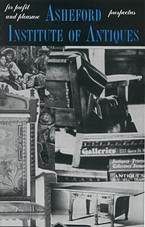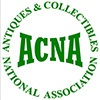|
Old School Becomes New School Cool  American Flag Quilt American Flag Quilt New York - It's definitely not your grand parents Bicentennial dining room, but it may just contain a few of those long treasured nationally themed items. At least according to a rising group of dealers, interior designers and emerging collectors who say that Americana is experiencing a revival not seen since the mid-1970s. Many of these industry insiders claim that in recent years, there has been a noticeable trend among millennials towards embracing the early American and Bicentennial style as part of a shift away from post-war modernism and the Mid-Century motif. This surge in interest has not only revived appreciation for these historical pieces, according to experts, but has also significantly impacted their market prices.  Simple Sells - Tavern Table Simple Sells - Tavern Table One of the key reasons behind this trend is millennials' growing appreciation for authenticity and craftsmanship. "Millennials are drawn to items with a story and a sense of history," says Susan Palmer, owner of Palmer Antiques. "The handmade quality and unique designs of early American antiques resonate deeply with their desire for individuality and sustainability." This generation, often characterized by their preference for experiences over possessions, finds a unique connection with antiques that have stood the test of time. "There's a tangible connection to the past that you just can't replicate with modern, mass-produced items," adds Palmer. Items such as authentic ladder-back chairs, simple tavern tables and even period correct Shaker baskets are all selling well says Palmer. The sustainability aspect also plays a crucial role. As awareness about environmental issues grows, more millennials are seeking ways to reduce their carbon footprint. "Antiques are inherently sustainable," notes Jane Smith, a historian specializing in American decorative arts at the Heritage Preservation Society. "By purchasing and repurposing these items, millennials are making a conscious choice to support sustainable practices." This shift towards ethical consumption aligns with the values of many millennials. Instead of contributing to the demand for new, resource-intensive products, they are choosing to invest in pieces that already exist and carry a sense of history.  American Themed Cast-Iron Doorstop American Themed Cast-Iron Doorstop For Nancy Shier, who owns and operates an antique and vintage collective in downtown Nashville, that sense of repurposing, combined with a curiosity about the nation's past is part of what's driving up sales of early American and rustic pieces. Shier says when she first opened her doors almost two decades ago, millennials were only interested in vintage items, but over the years that's changed dramatically. Today, whirligigs (even reproductions), framed woven American flags, doorstops, handmade quilts, along with twig-and-stick style furniture are all in high demand says Shier, "Ten years ago, I would've discounted these items heavily," she says, "but today, they're becoming some of my best sellers." Nostalgia and a connection to heritage are also significant factors. Many millennials feel a sentimental attachment to the styles and aesthetics of earlier generations. "There's a romantic notion of returning to simpler times," explains David Thompson, an interior designer at Colonial Interiors. "These antiques evoke a sense of nostalgia and continuity that is very appealing." For some, this connection is personal, tied to memories of grandparents' homes or family heirlooms. "There's something incredibly special about owning a piece that your ancestors might have used," says Thompson. "It creates a tangible link to your own history and heritage." Bicentennial Chic, as it's sometimes called, says Thompson, can include such items as Benjamin Franklin inspired rocking chairs, butter churns and crocks turned into table lamps, to actual spinning wheels being used once again as decorative items.  1970s Ethan Allen Colonial Revival Style Dining Table and Chairs 1970s Ethan Allen Colonial Revival Style Dining Table and Chairs The growing demand for early American and Bicentennial style antiques has inevitably affected their market prices. "We've seen a significant increase in prices over the past few years," reports Michael Andrews, an auctioneer specialising in antique furniture at Andrews & Co. "Items that were once considered relatively affordable are now fetching near premium prices at auctions." Andrews attributes this price surge to the combination of limited supply and increasing demand. "These pieces are finite; once they're gone, they're gone. As more millennials enter the market, competition for high-quality items has intensified, driving prices up." Andrews also notes that even reproductions from companies like Ethan Allen, who released a wave of nouveau Colonial Revival designs during the 1976 Bicentennial celebrations are now also bringing high dollar values at many sales. Michael Diaz-Griffith, a New York 'Antique Winter Fair' alum, and author of 'The New Antiquarians: At Home with Young Collectors,' says that he's been anticipating a renewed interest in the Bicentennial style for a number of years. "Millenials aren't minimalists," he says. In his book, Diaz-Griffith profiles young collectors who have decorated with funky Americana pieces rather than striving to create period correct historical rooms. During his years working at the Winter Fair is when he first started noticing his own generation beginning to eschew post war moderismn in favour of very old, and very quirky Americana pieces. For many in the industry this trend appears to be showing no signs of slowing down. With millennials continuing to prioritise sustainability, authenticity, and a connection to the past, a good number of dealers believe that early American and Bicentennial style antiques will likely continue to be highly sought after for the foreseeable future. "It's more than just a passing fad," concludes Palmer. "It's a reflection of deeper values and a shift in consumer behaviour that seems to be here to stay." Colonial Interior's, David Thompson is also bullish on the trends staying power and believes that the millennial embrace of early American and Bicentennial style antiques is a natural progression from the younger 'post-modernist' years to something more mature and traditional. "It's a heritage-trend that not only enriches their living spaces with historical significance," says Thompson, "but it's also helping to revitalise the antique market, ensuring that these treasured pieces continue to be appreciated and valued by future generations." - A.I.A. Staff Writers 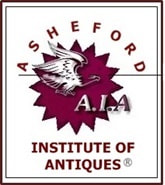 NOTE: For readers seeking more information about the Asheford Institute Of Antiques distance-learning program on professional-level appraising, the study of antiques, collectibles, vintage and mid-century modern items, please click here to visit the school's Home Page. Should you have additional questions about the Asheford program, you can also write to the school at: [email protected] or call the Registrar's Office toll-free at: 1-877-444-4508. Best Bets For Future Value Gains  Not Just Mid-Century Furniture Not Just Mid-Century Furniture New York - The antique and vintage industry is currently experiencing what many believe to be a modern renaissance, captivating decorative arts enthusiasts of all stripes and colours. Whether you've been curating a collection of early American rustic furniture for decades or are just beginning to appreciate the timeless elegance of Mid-Century motifs and designs, there's an undeniable surge of energy pulsating through the industry. With the advent of platforms like Mercari and Chairish, and the meteoric rise of freshly prepared events like the Rooftop-Night-Market at Vintage Land, or the booming popularity of Round Top Antiques Fair, the landscape for antique and vintage shopping is undergoing a dynamic transformation as a new generation of buyers seem to have finally embraced the allure of 'decorative' collecting. Terri Alrod, a notable figure in the New York design scene with over four decades of experience in the field, says she's observed a seismic shift in how people are integrating antique and vintage themes into their living and collecting spaces today, while also noting that some items and styles seem to be surging in popularity over others. We reached out to Alrod and six other prominent designers and industry-insiders from various regions to uncover the antique and vintage items that savvy investors might want to consider acquiring now, in order to secure some potentially significant resale value down the road. 1. 1950s Sunglasses: "It wasn't just the furniture from this era that was so cool," says Jemma Kirkland from Cat's Eye Vintage, "but all the accessories that came with it." Kirkland says that while she's always had a fondness for early eyewear, it was the 1950s styles that really resonated with her, and her customers. "It was the Golden Age of sunglasses," she says, "and the creations were simply supreme." Early cat eye designs, green-lensed high rim Ray-Bans, and artistic examples from Charles Goldsmith are now all commanding premium prices according to Kirkland, who says that some of her best 'finds' ever have been in drawers of vintage furniture she bought at garage sales. "That's the beauty of finding small collectibles," she says, "sometimes they're just hidden in plain sight." 2. Vintage Watches: Timepieces from renowned watchmakers have become coveted heirlooms and investments. Vintage Rolex and Omega watches, in particular, have seen a recent surge in value, reveals Boston based watch expert David Mallory. "The craftsmanship and prestige associated with these brands have made them highly desirable among collectors," he says. Add to that the celebrity endorsement from megastars like Tyler The Creator, and Pharrell Williams flaunting their own vintage examples, and it has made acquiring these items almost aspirational. Mallory says that these media star's 'wrist choices' are influencing a broader audience, with a subsequent ripple effect that is creating a surge in prices. 3. Tiled Coffee Tables: Yes, straight from the 1960s, tiled coffee tables are making a comeback, at least according to Tom Schoefield and his vintage collective in Miami. Schoefield says their vibrant patterns and durable construction make them both functional and eye-catching, especially to a younger generation that's seeking authenticity and sustainability in their purchases. "These vintage tables have gained a lot of favour with my customers," says, Schoefield, "which I think has a lot to do with straddling that line between modern and something that's more traditional." Schoefield notes that up until a year or so ago he could still buy plenty of these pieces for literally peanuts at most thrift stores, but "no more," he says, "prices are rising quickly." 4. Georgian & Regency Furniture: "I know, we've heard it all before, but this time there are some strong auction results to back up the claim," says Donna Brasher, an auction consultant who's been mining online sales data through her Austin, Texas company for almost two decades. "I've watched over the years as most 19th century furniture languished near the bottom of our sales charts, but that's begun to change in the last little while," she says, "people are once again buying these classic pieces and the prices are reflecting that move upward." Brasher also acknowledged that based on her recently amalgamated sales data and purchase results, she thinks there's probably a good chance that the rising prices on Georgian and Regency furniture will continue to escalate in the near-term as demand is beginning to show signs of outstripping supply. 5. 1980s Furniture & Collectibles: Not to be outdone by the surge in interest for classical antiques, Mary-Beth Thompson, who's kitsch and collectibles shop in San Francisco has been a beacon over the years for hardcore collectors of vintage furniture, says that the 80s have definitely become 'a thing' with millennial buyers and collectors. "It's when most of them were born," she says, "so in many ways it's like a call back to home." Boxy shaped white leather and patterned sofas, early console video games, and what many refer to as the 'Golden Age' of toys (think Dungeon & Dragon sets), have all skyrocketed in price, says Thompson. "I used to only carry the odd piece of furniture from the 1980s, but brisk sales of both collectibles and furniture from this era have made it hard to keep many of these items in stock recently." 6. Baroque Furniture & Décor: As trends in interior design cycle through history, many antique dealers say that the Baroque style is definitely making a comeback, as it tends to blend seamlessly with many contemporary aesthetics. Toronto based designer Philip Mitchell echoed that sentiment when he remarked that he has always loved the juxtaposition between new and old, especially as it relates to the Baroque style. “Hanging a bold abstract painting over a marble-topped Baroque console creates a sharp focal point and is a great way to add character and interest to any space," he says. However, Mitchell also cautioned that if collectors and buyers want to get in on the rising trend, then now is probably going to be the best time if you want to snap up some great pieces at affordable prices. 7. 1990s Wicker Patio Furniture: Mariel Brazier, a long-term dealer who's been selling out of her North Carolina antique and vintage garden shop for almost forty years, says she couldn't quite believe the 'wicker resurgence' herself, until customers started asking for it on-the-reg. Brazier, who's family run business encompasses over twenty-thousand square feet, says that wicker garden sets from the 90s have definitely returned to favour, and are back in a big way with many of her clients. "The stuff made in the early 90s was real," says Brazier, "not like the faux pieces made of plastic that you see today." Brazier said she started getting requests last year from people who remembered the quality of pieces made during that era, as well as from those wanting to redecorate their covered outdoor spaces using authentic wicker examples. Today, Brazier says most items go to wait-listed clients before they even have a chance to hit the showroom floor. "They're all spoken for," she says, "and if they're not, they're usually sold within a few days." For those hoping to cash-in on these rising trends, there is of course no guarantee as to life-expectancy. However, with a little market research, a bit of legwork, and some good timing, these top picks might just provide the avid collector and savvy dealer with the opportunity to make an extra buck-or-two, and possibly even more! - AIA Staff Writers  NOTE: For readers seeking more information about the Asheford Institute Of Antiques distance-learning program on professional-level appraising, the study of antiques, collectibles, vintage and mid-century modern items, please click here to visit the school's Home Page. Should you have additional questions about the Asheford program, you can also write to the school at: [email protected] or call the Registrar's Office toll-free at: 1-877-444-4508. Industry Insiders Chime-In On What To Collect For Future Gains 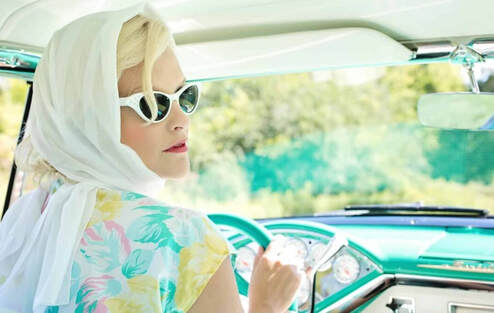 50s Nostalgia Returns 50s Nostalgia Returns New York - In the ever-evolving world of collecting, certain antique and vintage items often fly under the radar, only to later skyrocket in popularity and value. Savvy collectors know that identifying these hidden gems early on can often lead to rewarding and profitable endeavors. However, it wasn’t that long ago that antiques and many collectibles had fallen from favor among those in certain design circles. But these days, antique and vintage shows are often labeled as one of the hottest selling tickets in town, with shows like the Winter Show in New York, London's Decorative Antiques & Textile Fair in Battersea Park, the Washington Winter Show, and the Nashville Antiques & Garden Show all generating huge attendance numbers. So, if you're looking to stand out from the crowd in 2024, and want to invest in collectibles that could have the potential to become super popular (read valuable) in the near-term, you might want to consider adding a few of these items to your future collection. 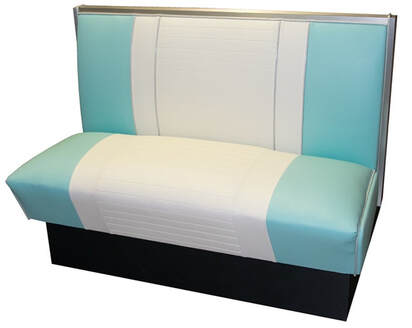 "Diner Décor" Finds New Devotees "Diner Décor" Finds New Devotees The 1950's Returns While many baby-boomers still have fond memories of Happy Days reruns and Grease flashbacks, it's another generation that seems to be spinning the wheel forward, at least according to David Kirk, who runs a 1950's vintage themed store in Nevada. "It's all about the kids" says Kirk. "I've been doing this for almost forty years, when boomers were my only customers, but today it's like a third-generation removed." Kirk says that many of his 'younger' clients love the vintage leather jackets, sunglasses, retro-converted car seats, and sock-hop poster memorabilia that adorns his store walls. "It's not Mid-Century stuff per se," says Kirk, "but more like the chrome and vinyl soda-shop bar stools - or what I like to call juke-box décor." Kirk, who also runs an online version of his 50s store, says that sales really began to take-off last year. "I have absolutely no idea why," he mused, but thinks that some of the newfound interest in his 50s-themed Americana items may just be part of a younger generations desire to harken back to what was often perceived as a simpler and less strenuous time in life to grow up in. "I've sold more bobby socks and saddle-shoe combos to kids in their 20s over the last ten months, than over the last five years," says Kirk, "There doesn't appear to be any rhyme or reason to it, other than perhaps a possible breaking trend." 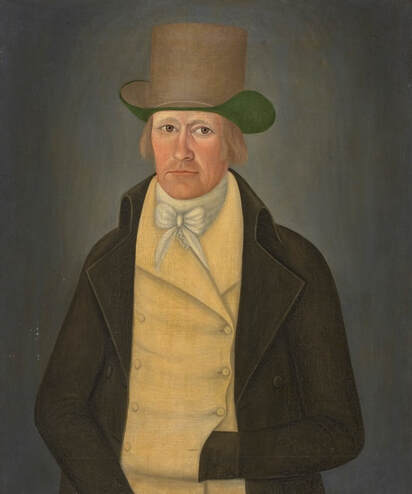 John Bourne Portrait Sails Past 150K Estimate, Sells For 2.67M John Bourne Portrait Sails Past 150K Estimate, Sells For 2.67M American Folk Art - Portraits According to some of the top auction houses, sales of Early American antiques are beginning their rise back to prominence within the decorative arts scene, however, a number of auction researchers are also reporting that one particular genre within this field is showing stronger than expected sales. Included in this group is Christie’s Sallie Glover, a specialist in Early American Folk Art who has been predicting the rise in art portraiture for a number of years now. “American folk portraiture appeals to many different types of collectors,” says Glover. “These works can go just as well with traditional American furniture as they do with a modern interior.” Glover's sentiments seem to match other results for online auction reports that also indicate a noticeable rise in popularity for this type of art form. Doris Henley, an Early American themed online dealer who also aggregates realized auction prices for her business, says that sales of her folk art portraits have ballooned over the past ten months. "I could see it coming," says Henley, "at first it was just a dribble, but then it really opened up about a year ago and the prices started to climb." Henley says she doesn't expect the popularity of folk art to wane anytime soon. "Brown wood and history are just coming back into vogue," she says, "this run has a long way to go yet." 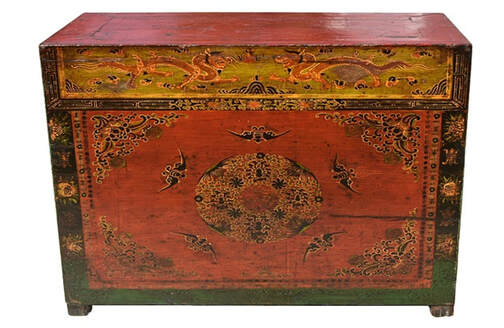 Mongolian Hand-Painted Chest Mongolian Hand-Painted Chest Decorated Chests Inaya Abbas, who runs a specialty themed bricks-and-clicks business devoted to antique blanket boxes and chests, says that while numbers ramped-up after the pandemic and remained constant for the next year, it wasn't until the middle of 2023 that she really began to notice an uptick in requests for items and sales of some of her more ornate inventory. "Shaker stuff was selling," says Abbas, "but the more exotic chests that I'd had shipped back from Asia and the Middle East really started to move by the end of the year. It's as if a light went off and everyone suddenly decided they had to have a blanket box - it's been crazy busy," she says. Abbas, who's been selling within the decorative arts scene for almost fifteen-years, believes that we're just beginning to see the tip of the iceberg now as people move further away from today's modern motif as a core decorating principle. "I think it's just time for a change, people seem to want more warmth and color now." 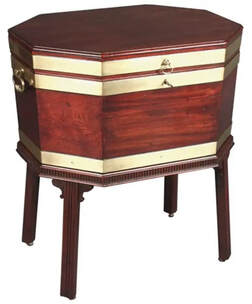 Georgian Wine Coolers Popular Georgian Wine Coolers Popular "Some" Georgian Furniture Backing up Abbas's claim, Noel Fahden, the vice president of merchandising at the online antiques and vintage juggernaut Chairish, also indicated that sales of blanket chests and antique boxes had been on the rise recently, particularly those with original decorative painted finishes. "They can be Swedish or Pennsylvania German, but the more ornamentation the better,” she said. Fahden also went on to note that it wasn't just blanket boxes that had become popular, as she'd also witnessed a pronounced resurgence in traditional furniture over the last year as well. “This ran the gamut from Chippendale to Federal and included both American Colonial Revival pieces and original English and Continental antiques,” said Fahden. Overall, Chairish has recently reported strong upward sales related to almost all aspects of the brown furniture genre. 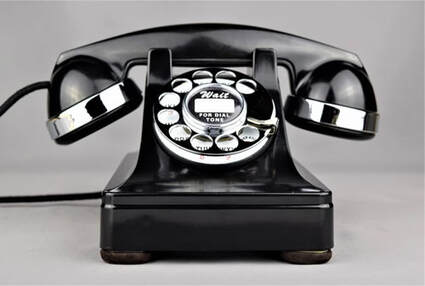 Old Rotary's On The Rise Old Rotary's On The Rise Rotary Phones While it may be hard for some to fathom, since it might only seem like yesteryear that we were all on landlines (we were), Jin Chang says that sales from his retro collection of last century's rotary phones has been on a skyward trajectory since he opened his private collection website to the public and online sales in 2022. "Most of my buyers are Asian kids who love tech stuff." says Chang, "but it's slowly beginning to change." Chang thinks that most of his clients just want that connection to early past tech, and they're willing to pay for it. When he first started out, Chang claims that finding inventory was easy - it was plentiful and cheap - but no longer. "You can still buy some cool 'hole-dialers' at good prices," he notes, but admits that much has changed over the last year or two. "I now have to compete for inventory in some places," he says, "it's not like the old days where you could literally find examples that had been thrown out with the trash." Chang believes that on average, prices for many of his better quality rotary's have probably doubled in price over the last year, and he doesn't see that slowing down anytime soon. "I've got more demand than supply," he says, "so until that changes, I think the market will continue to remain strong." 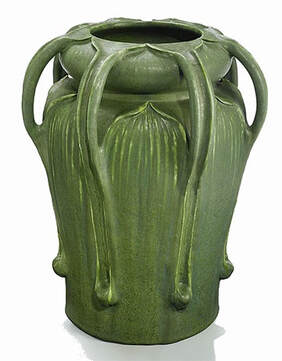 Ceramics Begin Comeback Ceramics Begin Comeback Vintage Studio Ceramics Once lacking in the doldrums, vintage studio ceramics finally look to be making a comeback as well, at least according to many auction-house insiders and industry dealers. Benjamin Walker, Bonham's head of global decorative arts and design department, says that the auction house is seeing a comeback in interest for clay. “The international market for contemporary British ceramics is well established and has been growing in strength,” says Walker, “We’re now seeing a growing trend in American studio ceramics that is following this interest. Over the past five to ten years the category has gained more public interest and climbed in value.” Recent sales would seem to back-up Walker's claim, as examples from auction results showing a 1968 Hans Coper vase (with top) being sold for a record-setting $790,000 last year. Pam Newley, a New York artist who works in clay, and who also runs an established online gallery devoted to early twentieth-century American ceramics, says that she's also seen a marked increase in interest by consumers for quality ceramic pieces as well - and not just those from studios. "Ten years ago there just wasn't that much of a market for clay anymore," she says, "but in the last two or three years it's all started to come back." Newley, who's been in business for almost thirty-years knows it's cyclical, of course, but says that, "It's just starting-up again," so for those looking to get in on the ground-floor as collectors or re-sellers, "now would probably be a good time." For most though, trying to ascertain the vagaries and movement patterns of 'in-demand' objects within the field of the decorative arts can often make one feel like you've got a better chance of nailing water to the wall, than getting a reliable market prognostication of things to come. However, as David Kirk is fond of reminding people who visit his store's 1950s-inspired website, "Figuring out what's going to be hot and collectible is easy; it's all just a matter of heading back to the future again... right?" - A.I.A. Staff Writers  NOTE: For readers seeking more information about the Asheford Institute Of Antiques distance-learning program on professional-level appraising, the study of antiques, collectibles, vintage and mid-century modern items, please click here to visit the school's Home Page. Should you have additional questions about the Asheford program, you can also write to the school at: [email protected] or call the Registrar's Office toll-free at: 1-877-444-4508. Auction Results Show What's Selling  Getting The 'Real' Numbers Getting The 'Real' Numbers New York - Finding that perfect blend, whether it be one's morning coffee, or a list of the current market's best-selling and most popular antique and vintage items can often require a little experimentation to get the desired effect. However, one source that often trumps all the rest when it comes to the simple facts regarding popularly sold items (and nothing more), are the hard and cold "realized" sales numbers provided by auction houses. When fully aggregated over a relative period of time, these statistics can add some serious heft to the tale of what's actually selling within the decorative arts world at any given moment. Which means that if you're searching for sales patterns that can have a meaningful impact on your bottom line as an antiques and vintage dealer, or as a collector wondering about present day values, then it's probably going to be worth your while to take note of how auction results are trending when it comes to marketplace sales. With that notion in mind, staff writers decided to reach out to a few auction houses, gathered some statistical reports, and then tabulated the information, which revealed several categories that have been performing exceptionally well recently, as shown in the results below.  Hermès Handbags Hermès Handbags 1. Fine Art and Jewelry: High-value sales in fine art, including Impressionist and mid-century Modern art, continue to be prominent. Antique and vintage jewelry, especially from renowned designers, is also fetching high prices at many of the top tier auction houses according to both Chirstie's and Sotheby's. 2. Luxurious Vintage Handbags: Especially those which come adorned with diamonds and gold hardware have been fetching impressive prices. For instance, Heritage Auctions recently sold one Hermès example for $185,000. Even basic Hermès bags, like the Rouge Garance Evelyn, can still sell well. An Evelyn bag recently displayed a 'sold' listing on eBay for just over $2,000. 3. Vintage Political Collectibles: Perhaps it's just a spinoff effect from the current political landscape, but many online auction sites are reporting strong sales of Items related to political campaigns, such as buttons, posters, and memorabilia featuring images of candidates from the 1920s or earlier. Collectors are apparently appreciative of the historical significance and nostalgia associated with the pieces as the significant move up in pricing seems to reflect this interest.  Casio Watches Casio Watches 4. Mid-Century Modern Furniture: According to LiveAuctioneers, this style remains highly desirable, with pieces from designers like Eames and Herman Miller continuing to achieve significant price increases. While demand was down slightly in some eastern urban areas like New York City, the overall auction results seemed to indicate that the interest in mid-century modern furniture continues to be a popular choice in almost all other locations across the country. 5. Vintage Watches: Collectibles, including vintage watches from brands like Rolex, Cartier, Bulova, etc. are all highly sought after in the current market with strong realized prices. However, according to the curated online auction site Bidsquare, condition, rarity, and provenance still play a crucial role in determining their final value at hammer-time. Other more common bands such as Timex and Casio also proved to be winners with bidders. 6. Kitchenware and Barware: While many may have thought that the explosive resurgence in vintage kitchenware items, especially from brands like CorningWare, may have come and gone, according to numbers from the online auction site HiBid, nothing could be further from the truth. Cornflower Blue examples continue to list at extremely high prices with some selling in the thousands of dollars - apparently driven by collectors' nostalgia and their increasing scarcity as online buyers snap up dwindling supplies.  1936 Monopoly Game 1936 Monopoly Game 7. Lighting: Custom-made and vintage lighting fixtures, particularly those with an industrial bent or post-steampunk motif, are in high demand according to curating staff from Kovel's Antique Trader (one of the nation's leading antique publications), who say their reporting of auction results has consistently shown strong numbers for individualistic and one-of-a-kind creations, as well as for lighting pieces from the 1970s, including space-age designs and copper chandeliers from the early 1980s. 8. Toys and Board Games: When it comes to recreational items, the online auction site Invaluable says that vintage toys, such as diecast cars and board games like Monopoly and Risk, are experiencing a boom in collectible interest. These items are apparently particularly popular amongst younger collectors, who also seem to be responsible for driving up recent auction prices over the last year. As with most collectibles in this category, 'condition' is everything.  Not Just "Jordan" Not Just "Jordan" 9. Sports Memorabilia: Finally, Goldin Auctions says that iconic sports memorabilia, such as game-worn jerseys and autographed items are continuing to attract high prices, with a Michael Jordan game-worn jersey selling recently for $10.1 million. However, it's not just the uber celebrity sport tie-ins bringing in the cash, according to Goldin's website, as even average examples from the sporting world, such as collector cards and signed equipment from mediocre stars, are also bringing in substantially higher sale prices. While pricing and trends can of course change like the wind, "realized" auction results can nevertheless highlight a broad area of interest within the decorative arts field that is backed by actual sales numbers. And, while many of the items and categories represented here seem to exude a certain historical significance, aesthetic appeal, and a touch of nostalgia, it would also appear that the majority of collectors who are footing the bills for these items are particularly focused on the well-preserved pieces that can offer them a clear line of provenance, and hopefully a potential upside in future value, in exchange for their high-dollar auction house investments. - A.I.A. Staff Writers  NOTE: For readers seeking more information about the Asheford Institute Of Antiques distance-learning program on professional-level appraising, the study of antiques, collectibles, vintage and mid-century modern items, please click here to visit the school's Home Page. Should you have additional questions about the Asheford program, you can also write to the school at: [email protected] or call the Registrar's Office toll-free at: 1-877-444-4508. Style Gurus & Design Experts Have Their Say... 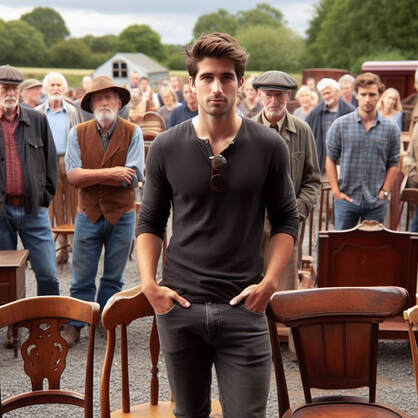 "Brown Is Back"... According To Some "Brown Is Back"... According To Some New York - According to a number of reports coming from the front-lines of the decorative arts scene, it appears that the corner may have finally been rounded for the long awaited return of 'brown' furniture's status as an in-style icon. After years of all-white, minimalist interiors, brown furniture - the kind associated with most antique shops - is no longer suffering from the 'brown is down' moniker, and instead seems to be riding a wave of popularity putting it back into form and fashion with designers, dealers, and collectors alike. Magazines and international newspapers, such as Homes & Gardens, The Telegraph, and digital lifestyle media companies like PureWow, are all awash in stories of the power of 'browns' return to prominence within the decorative arts industry. Individually renowned designers such as Martin Waller, founder of the Andrew Martin design firm, and Suzanne Duin, from acclaimed Maison Maison interiors, also seem to be in agreement that it's 'browns' time to shine once more. Duin says she shares her colleagues belief that 'there's a desire for the natural and a craving for earthy themed tones again,' but also thinks that brown wood has a broader general appeal and is a 'warmer and more contemporary alternative to just a grey decorating canvas.' For Harold Blum, who's manages one of Philadelphia's largest antique and interior design firms, it's been like an ever-changing world of trends that seem to come and go like the seasons. From minimalist Scandinavian aesthetics to bold maximalist statements, Blum says homes have reflected the prevailing tastes of the moment, but now believes that amidst this ever-shifting landscape, there’s a quiet revolution happening that's celebrating the return of brown antique furniture as much more than just a passing trend. "Our sales of Georgian inspired Victorian pieces are selling into homes that were once white-washed with a modern motif," says Blum, "with some even being repeat customers who just a few short years ago were only interested in purchasing Mid-Century." Blum thinks that as many of these younger buyers age into their forties, and acquire 'forever' homes, the desire for warmer and more traditional furniture will start to take hold. 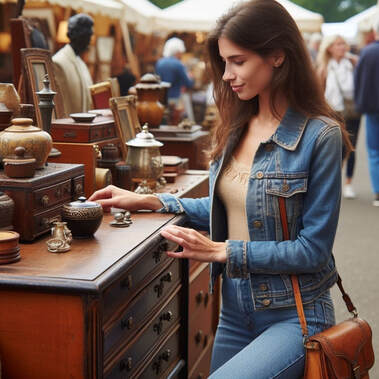 Interior Design Requests For Brown Wood Rise Interior Design Requests For Brown Wood Rise In design groups across the Internet, there have also been rumblings on a number of related forums and websites recently about the rise and return of brown furniture to it's famed decorative status. Kimberley Hill & Associates, a design consulting firm that also hosts online forums related to decorating, says that for years brown furniture was unfairly labeled as dated, heavy, and clunky. "It was the kind of furniture that often ended up in yard sales or was hidden away in attics," says Hill. However, a group of contemporary designers and colleagues who work with Hill, say they're ready to challenge this perception. They see the intrinsic value of these pieces - crafted from solid, dark woods like walnut, teak, rosewood, and mahogany - as essential contributors to a well-rounded and soulful living space. "Our requests from clients for dark wood has gone up tenfold in the past two years," says Hill, "but it's not just us experiencing the surge, other designers on decorative forums say they're seeing the same level of increased interest as well." David Knowles, who's been showing at some of the largest antique fairs up and down the east coast for over forty years, says he's relieved to see the pendulum finally beginning to swing back to the 'brown side of town' again. As a dealer, Knowles says he remembers the heyday of brown furniture back in the 1980's, and admits that while it's nothing like that yet, he still feels that the tide has finally turned. "It may just be an east coast thing for the moment," concedes Knowles, "but it's definitely taken root, and from what I've seen, it only looks to be gaining traction." Knowles says that many of the younger dealers who also attend some of the same shows as he, have also begun to add more dark furniture to their repertoire of inventory. "The numbers are up," says Knowles, "which means that if you happen to be sitting on a well-stocked supply of items, or bought cheaply enough in the past, you're probably going to see some pretty decent profits in the next little while." Of course, no one is suggesting you have to go all-in when it comes to buying and decorating with brown furniture, but as online vintage designer and retailer Madeline Smith likes to remind her clients, "It's all about balance." Smith who's been buying and selling for almost twenty-five years says that the key to incorporating brown furniture into any design motif comes down to three simple concepts. "First, work sparingly. Rather than filling an entire room with dark pieces, choose one or two standout items. Make them focal points that add depth and character. Whether it’s a chocolate brown antique leather sofa or a beautifully grained wooden sideboard, less can indeed be more. Second, mix and match. Don’t limit yourself to a single wood finish. Mixing different wood species and finishes adds uniqueness to your space. Pair golden teak with rich dark walnut against taupe or grey walls for definition and contrast. And finally, try to seek balance. To avoid the dark and dreary look, accentuate brown furniture with lighter accents." Smith says that by not opting for just the 'brown' look with her clients, and instead advocating for a more evenly distributed approach, she's actually sold more dark furniture recently than ever before. "Sometimes less can be much more," says Smith, "don't try to oversell it, especially if it's starting to sell itself." While most design experts and industry-insiders would probably agree that brown furniture has certainly not returned to the forefront of the decorative arts movement just yet, there is also likely to be a simultaneous consensus from many in the business that a trend-revival and resurgence of the 'brown' motif is already well on its way. Once considered passé, it would now appear that many of these pieces are suddenly making a triumphant return, reclaiming their place in contemporary interiors while captivating designers and homeowners alike with their timeless charm and enduring appeal. - A.I.A. Staff Writers  NOTE: For readers seeking more information about the Asheford Institute Of Antiques distance-learning program on professional-level appraising, the study of antiques, collectibles, vintage and mid-century modern items, please click here to visit the school's Home Page. Should you have additional questions about the Asheford program, you can also write to the school at: [email protected] or call the Registrar's Office toll-free at: 1-877-444-4508. Buying In-Person Has Its Advantages 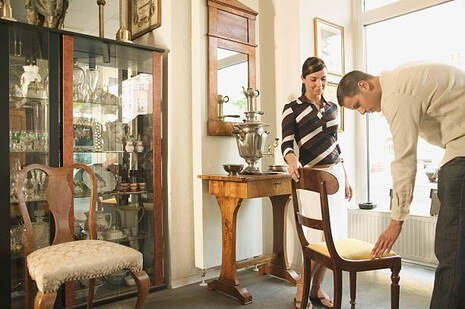 Dealers Hitting The Road Once Again Dealers Hitting The Road Once Again New York - While most antique dealers are aware of the fact that they can simply go online and tap, tap, tap, till their heart's content when it comes to sourcing out antique and vintage items, the question still remains for many in the industry as to whether or not this is truly the best option for those wanting to obtain the best possible inventory at the best possible prices. Yes, 'smalls' can be shipped, and online items can be viewed from the comfort of your home, but are you really getting the best resale deals for your business when hitting up sites like Chairish, scrolling Marketplace or watch-listing eBay? For a growing number of dealers, that answer is increasingly becoming a hard no, as many in the industry are once again returning to a tried-and-true method for stocking up on inventory that allows for in-person inspection of items, point-of-sale haggling, and a load-and-leave option to bring it all home the same day. For those of a certain age, finding these honey-holes often used to require a secret handshake or possibly even a knowing-nod (wink, wink), but today, with a little intrepid investigating from staff writers, and some on-site tips from a few industry-insiders, we've put together a list of what we think are some of the best locales for sourcing out a variety of great antique and vintage finds from across the country, and in Canada too. 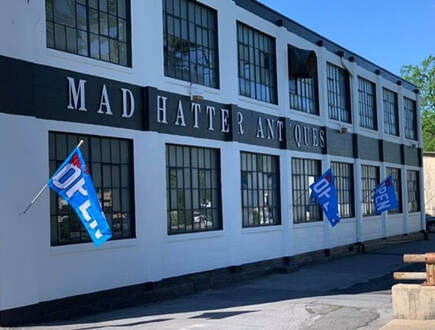 Large Venues With Multiple Dealers Large Venues With Multiple Dealers Adamstown, Pennsylvania Adamstown, often referred to as Antiques Capital, USA, lies in Lancaster County. Here, around twenty antique and vintage stores beckon collectors with some unique finds and what many report as dealer friendly prices. Sheila Hayes, a long term east-coast picker and regular to the Adamstown scene, says this is the first and often best stop along her twice-yearly antique buying trip. "Prices are fair," she says, "but more importantly there's just so many quality items to choose from." Hayes believes this plentiful supply of quality pieces is what makes one-stop-shopping for her store a lot more possible. "They're showroom ready," she says, "and they tend to move quickly with buyers." Spots to hit: Black Angus Antiques Mall, a good collection of antique furniture, collectibles, and vintage jewelry (check hours of operation). Mad Hatter Antique Mall, over a hundred booths showcase a wide selection of vintage goods from a group of eclectic dealers. Extravaganza Sales; plan your visit during one of the area’s periodic antique sale events and you'll get additional discounts. Visitor numbers are still down somewhat post-pandemic, so haggling and deals should be expected.  Quirky Vintage Items Abound Quirky Vintage Items Abound Old Town Cottonwood, Arizona Nestled in the scenic Verde Valley, Old Town Cottonwood boasts a world famous eclectic secondhand and vintage scene with a variety of shops and stores all within walking distance. Papillon Too; from antiques to vintage items, this is often considered a go-to staple for resellers looking for unique must-have top quality vintage items. Prices are on the higher end, but examples are often in pristine condition. J & J Antiques; multiple dealers with reasonable prices on rustic antique and vintage items. Most of the stores in this area contain an eclectic mix of quality pieces with dealers who are motivated to sell. Locals report that foot-traffic has also been impacted by online buyers and reticent post-pandemic travelers, leaving plenty of opportunity for walk-in's and those who like to negotiate. As an added bonus, if you happen to get thirsty while there - you're in luck - as the town is also famously known for its craft beers. 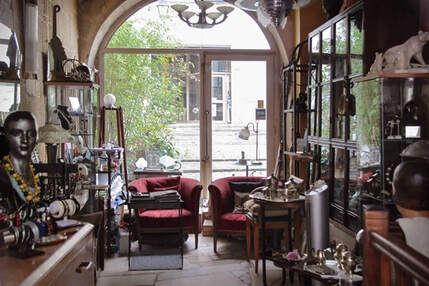 Plenty Of Traditional Antiques Plenty Of Traditional Antiques Millerton, New York Millerton, nestled in upstate New York just two hours north of Manhattan, exudes a distinct charm. Its independent businesses and local commerce create a warm and welcoming environment for antiquing. Here are the highlights: Millerton Antiques Center; with over thirty-five dealers, this center offers specialty stalls featuring fine European art, pottery, and Oriental rugs. Sarah Pugh, who attends regularly on behalf of her Manhattan gallery, says that prices can be higher than some places, but most dealers are willing to deal to dealers. "It's load-and-leave shopping," she says, "the selection is just so good, I can literally come home with two months worth of inventory from just a single afternoon's buy." Other notables include: Main Street Finds - don’t miss Hunter Bee and Montage - both mainstays in Millerton’s well-established antique scene. Local Flavor; while antiquing, recharge at the Irving Farm Coffee House, known for its fair-trade coffee and freshly baked pastries. 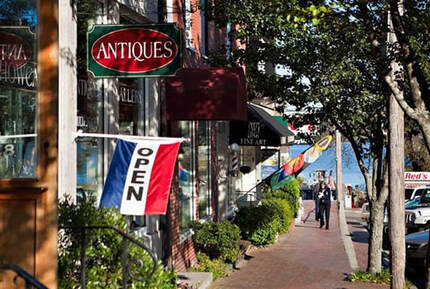 Quality Dealers & Shops Quality Dealers & Shops Wiscasset, Maine Wiscasset, with its historic grandeur overlooking the Sheepscot River, is a picture-perfect Maine village and one of Sam Waterman's favorite destinations when it comes to picking up some top-tier goodies. Waterman's upscale antique business in Boston has been sourcing inventory from the Wiscasset area for generations. "My father used to take me there when I was just a kid," he says, "with some of the dealers becoming like family." Waterman acknowledges that you really have to know what it is you're buying to make a profit, but says it's worth it if you happen to have potential clients waiting in the wings. Not to be missed: Water Street Antiques; a well-cataloged collection of fine Americana, weaponry, books, and folk art. Michael Dunn Antiques; known for a world-class collection, some of their pieces have even graced museums like the Metropolitan Museum of Art and the Victoria & Albert Museum. Also of note; the Wiscasset Antiques Mall and the Wizard Of Odds in the Old Head Tide & Feed Store. Prices are going to be 'up there' at some locations, but then again, so is the quality. Just make sure to leave enough room for some resale margin if you do decide to buy. 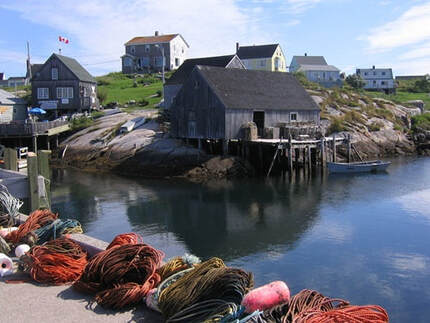 Cross Border Discounts Cross Border Discounts Canada's Maritimes Heading north, the Canadian Maritimes, particularly Nova Scotia and New Brunswick, offer a unique blend of European and maritime influences. Coastal towns with a rich seafaring history often have antique shops filled with nautical artifacts and vintage items at extremely attractive prices - especially for international buyers. Mary Stouts, a longtime dealer who hails from just outside of Sackville, New Brunswick, says that she's been serving as a de facto trade-stop for American dealers coming up to buy for over forty years now. "With a favorable exchange rate over twenty-five percent and dealer discounts, it's a buyers dream for most U.S. customers," she says, "after all, where can you find some of the earliest antiques on the continent at these kind of prices." What to see: Antiques Plus in Belledune is a great place to start, but roadside outbuildings with no visible business signs abound in virtually every town, and are a pickers delight. Just ask around and the friendly locals will point you in the right direction. 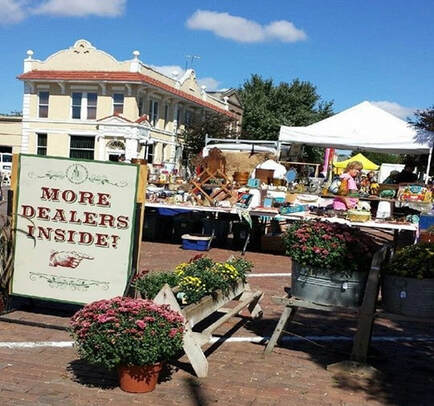 Smaller Shows Drawing 'Pickers' Smaller Shows Drawing 'Pickers' Walnut, Iowa Tom Bradford, a coast-to-coast picker, who's been on the road for over thirty-five years, says that he's seen the highs and lows of the antique industry, and that while right now it's rolling again, you really have to know where to buy to make some big profits. "I don't go to the Brimfield or Round Top shows," he says, "they're too congested and the prices are just too high." Instead, Bradford says he concentrates on shows like Walnut, a city in Pottawattamie County, Iowa. Smaller, and off the grid to some degree, Walnut is known as Iowa's Antique City, with over a dozen antique shops lining its historic Main Street. You can browse through a variety of goods, from furniture and pottery to toys and books. Start with: Granary Mall; lots of signage, old Coke machines and everything else in between. The annual Walnut Antique Show occurs in the middle of June, and is favorite of pickers from far and wide. 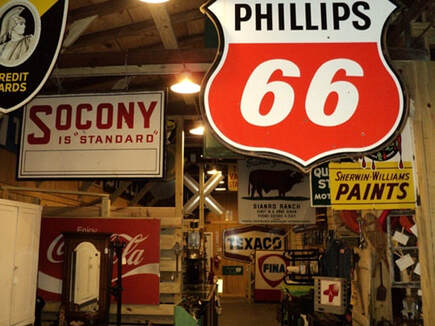 Plenty Of Advertising Signs Plenty Of Advertising Signs Hazel, Kentucky Another contender that often flies under the mainstream radar, this small town near the Tennessee border has a population of less than five-hundred, but a reputation for being an antique lover’s paradise. You can find over a dozen antique shops along Main Street, offering a wide range of items, from advertising signs to quilts, to glassware and pottery. Store highlights include: Mantiques; with a vast collection of oil and auto signage and railroad memorabilia, there's an eclectic mix of just about everything to be found. Blue Moon Antiques; offers larger case pieces that have been well sourced by the proprietors. Many dealers report store owners to be receptive to discounts and bargaining for those working in the business. There are of course many factors to consider when contemplating the merits of hitting the road in search of antique and vintage items as opposed to the convenience of online shopping and local Internet pick-ups. However, when weighed against the hands-on experience, face-to-face interaction, and availability of quality sourced goods from respected vendors, it would appear that some dealers today are indeed opting to return to in-store purchases as a way of not only exploring the rich tapestry and decorative history of North America first-hand, but also as means of potentially acquiring some unique and one-of-a-kind treasures at some very reasonable prices. - A.I.A. Staff Writers  NOTE: For readers seeking more information about the Asheford Institute Of Antiques distance-learning program on professional-level appraising, the study of antiques, collectibles, vintage and mid-century modern items, please click here to visit the school's Home Page. Should you have additional questions about the Asheford program, you can also write to the school at: [email protected] or call the Registrar's Office toll-free at: 1-877-444-4508. Industry Experts Make Their Predictions 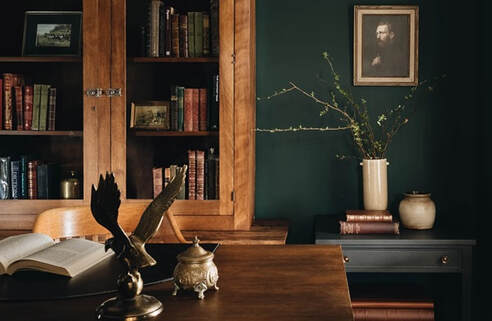 Brown & Brooding Is Back Brown & Brooding Is Back New York - According to the latest industry report from the online reseller site Chairish, antique and vintage furniture shopping hit a record high this past year, with sustained growth predicted to remain at outperform for the remainder of 2024 and likely beyond. For most working in the resale industry this is incredibly good news, but there is of course one caveat to this wonderful report; what exactly is it that's selling so well? For many dealers 'in-the-business' these types of industry proclamations have become somewhat of a familiar refrain recently, with many often relying more on headlines than actual product examples when fleshing out their press releases. However, with a little investigative digging, show-stopping and some intrepid reporting from staff writers, we've managed to put together what we think could be a few solid bets for some 'outperforming' antique and vintage trends that you might just want to keep an eye on in 2024. 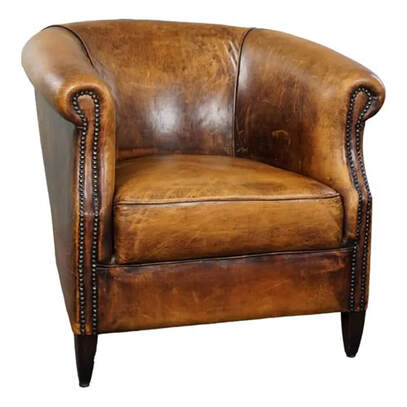 Coastal Grandpa "Grandpa Core, Country Club Chic, or whatever name it is you'd like use," says Jennifer Bush, an interior design consultant from New York, "is a decorating style that has definitely arrived on scene." Bush says that while there are multiple monikers for this movement, it's really just a return to the more masculine decorating design motifs from previous generations. "It's not only back to brown furniture," says Bush, "but brown leather, dark fabrics, and wooden framed hunting scenes resting above leather wrapped country club chairs, in a wood paneled drawing room." Bush says if there was ever any doubt about brown furniture being back in, there shouldn't be now. 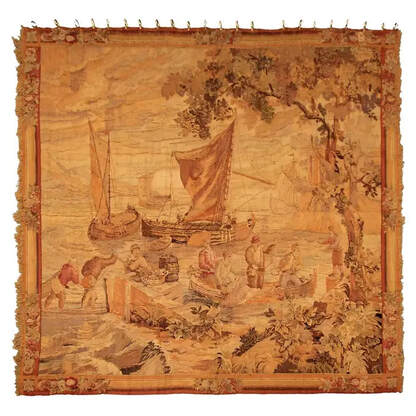 Textiles For showgoers Anna & Christy Merrimack, whose blog and TikTok channel cover the hottest buying trends at antique and vintage fairs, it's all about fabrics and wall-hangings these days. "These aren't your great Granny's doilies," says Anna, "but full-sized antique tree-of-life tapestries and textiles." The sisters say that without a doubt, they've witnessed more sales of textiles at shows over the past year than anything else, with prices almost trebling in a matter of months. "It's all part of a return to a warmer ethos," says Anna, "and you can see it being represented in the stock that dealers are starting to carry at many of their shows." 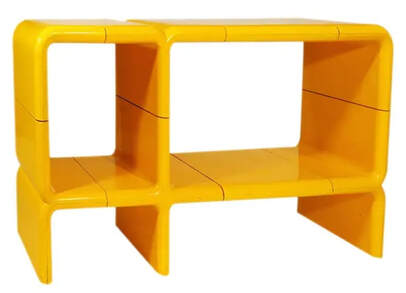 1970's Modular Furniture Max Fennec's South Beach vintage and supply store has always been a popular go-to for many in the interior design scene. And while Fennec says that he stocks a wide array of vintage items to suit as many tastes as possible, it's become increasingly apparent that certain items related to 1970s furniture have surged disproportionably in popularity recently. "Five years ago I maybe had two requests a year for Umbo modular shelving systems," says Fennec, "Today I'm lucky if I can even find two examples to buy a year." Fennec noted that demand is not just limited to Umbo pieces either, but anything modular that screams of the 70s motif. "I really don't see this trend cooling off anytime soon," he says, "particularly in the coastal south where our architecture and buildings tend to blend well with these kind of funky space-age designs." Fennec admits that while he still sells plenty of Mid-Century goods, it's the distinctive 70s stuff that's now taken over his leadership board. "I'm literally buying it as fast as I can," he says. 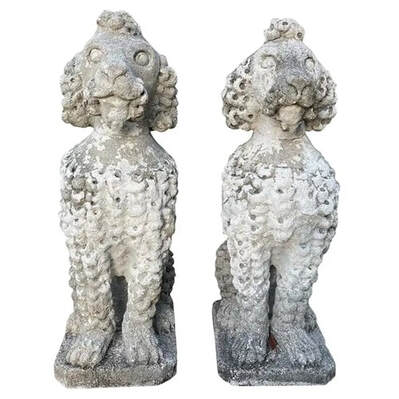 Statuaries Trends can change pretty quickly when it comes to outdoor vintage décor, at least according to Shirley Smart, whose bricks & clicks vintage garden center in upstate New York, has seen a number of passing fads come and go over the past few years. But one trend that Smart says she's noticed has remained strong, has been the public's increasing interest and demand for antique and vintage animal statuaries. "I'm selling many broken and damaged antique examples for more now than I was charging for pristine pieces just a few years ago." Smart acknowledges that's it's also a trend that hasn't altered its course in quite a while, "Statuaries have been on an upward trajectory for some time now," she says, "and based on current sales, I don't really see that changing." Smart also noted that it wasn't just the animal statuaries that were moving well, but virtually all forms, including fountains, planters, decorative objects and garden sculptures in general. 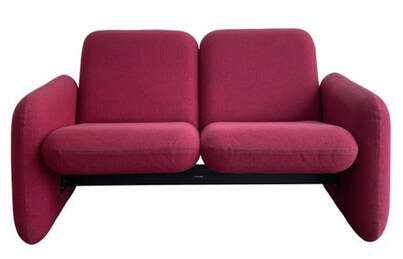 Chiclet Sofas For Charlotte Taylor, her money is on vintage chiclet sofas for one of the best 'buy' trends heading into 2024. Taylor reports that her west coast vintage design house can literally sell any example, in literally any condition, before it even hits the showroom floor. "I used to spend time and money on reupholstering," she says, "but today it's completely unnecessary, as I make just as much selling them in 'as is' condition as I do refurbished." Taylor notes that while 1970s examples top the list for chiclets, virtually any style of loveseat from Hepplewhite to Victorian, up to 1940s-clamshell and 1960s-channel backs are all selling well. 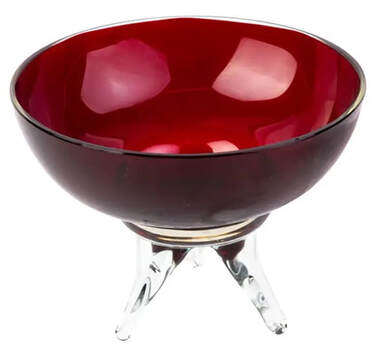 Venetian Glass Rounding out the list of possible up-and-coming trend candidates for 2024, Jay Bower, whose online concerns include a number of upscale Etsy and Chairish shops, says that he's found the greatest change in demand for any one item over the last year has been for Venetian glass. Bower says he was initially surprised after listing some Venetian barware for sale that sold out almost immediately, and which was quickly followed up by requests for more. Since that time Bower says he's gone all-in, adding everything from sconces and glasses to vases and even chandeliers to his online inventory. "I'm selling three to one compared to last year," he acknowledged, "and with a much higher profit margin." Bower believes that with many antiques rising in value now, it only makes sense to be paying attention to what’s trending in the decorative arts field, after all he says, "If I don't, someone else certainly will." As with any medium that relies upon a crystal ball, expected returns and results are likely to vary greatly. However, with a little planning, some due diligence, and a bit of research into the matter, savvy buyers might just find themselves at the forefront of some of this year's hottest breaking trends by taking note of these observations. If not, well... there's always next year. - A.I.A. Staff Writers  NOTE: For readers seeking more information about the Asheford Institute Of Antiques distance-learning program on professional-level appraising, the study of antiques, collectibles, vintage and mid-century modern items, please click here to visit the school's Home Page. Should you have additional questions about the Asheford program, you can also write to the school at: [email protected] or call the Registrar's Office toll-free at: 1-877-444-4508. Modern Persists, But Softer Tones Gain Ground 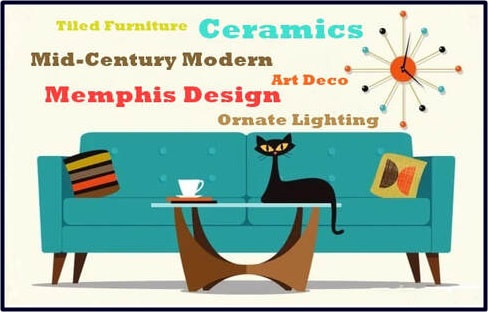 New York - The Asheford Institute's fifteenth annual survey of top decorative arts buying trends from the past twelve months is now available digitally and in print nationwide. The international poll of students and alumni by the Institute serves as an essential guidepost for many in the industry, especially as it relates to the current state of today's decorative arts marketplace, and as a directional sales barometer for those working in the antique and vintage business. The school's unique position of having unfettered and direct access to a substantial number of industry respondents has made the survey a staple for many in the decorative arts community. (*Note: The link to the "complete survey listings" can be found at the end of this article) Anthony Harper, the school's lead researcher, says the key to getting meaningful survey results that antique and vintage businesses can actually use to help plan their inventory and buying strategies for the upcoming year is based on receiving actual sales data, alongside item-specific requests from buyers, which can then be used to indicate interest within a particular collecting genre. 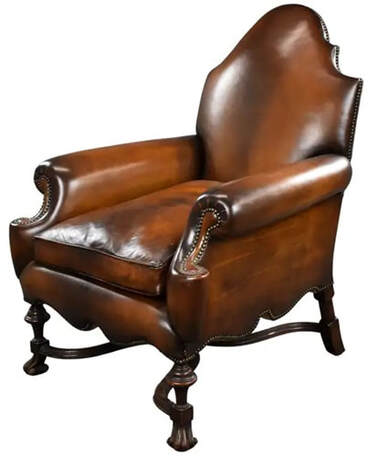 Victorian Sales Surge Victorian Sales Surge Harper says that while most other industries suffered from early supply-chain issues in 2023, it was actually a boon to many working in the decorative arts business, since supplies of used goods were already readily available. "People turned to antiques and vintage items when they couldn't source new," said Harper, "in large part because the items were right there in front of them and could be immediately taken home." This accessibility helped dramatically bolster sales of Victorian and Early American pieces according to many of the dealers involved in the survey. Although supply-chain-buys from those originally looking to purchase 'new' could have potentially affected the poll's stats, Harper says he's firmly convinced the numbers will hold. "Our survey has been showing a resurgence of interest related to brown furniture for a while now," he noted, "but this past year it really began to resonate in a much larger way with a variety of different buyers and collectors." 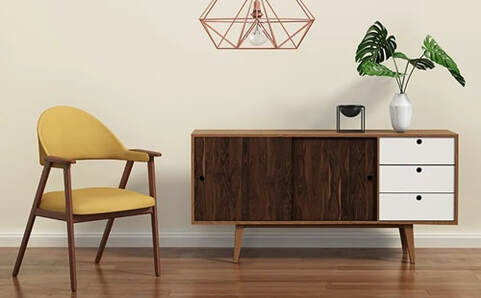 Mid-Century Holds Strong But Faces Challenges Mid-Century Holds Strong But Faces Challenges Fan favorites like Mid-Century Modern and Art Deco also continued to run strong with many of the dealers who participated in the poll, however, Amber Shole, who's been compiling school survey statistics for over twelve years now, says there were some newcomers to the scene as well. "The modern motif isn't over by a long-shot," said Shole, who admitted to witnessing a surprising comeback from a 'look' that many had relegated to the oddities-pile of the 1980s. "It's definitely not a trend I was expecting to see," she said, "but I've learnt over the years to never underestimate people's affinity for nostalgia." Shole went on to say that aside from the quirky 1980s style reboot, there was also another one from the 1950s which didn't involve MCM, but also made the list. "It's really interesting," she says, "just when you think you've seen everything from a particular period of time and collecting genre, something else pops up seemingly out of nowhere." All of which Shole says is why she thinks readers are likely to find a few unexpected surprises in this year's survey results." As with previous trend samplings, Shole notes that it's primarily Millennials who are continuing to move the needle forward when it comes to buying and collecting. "You may still find Boomers at Sotheby's and Christie's," she says, "but everywhere else it's almost certainly going to be a younger crowd driving the creation of new collecting trends." For those interested in reading the Institute's complete yearly survey listing of best-selling antique and vintage genre categories from 2023, including this year's winners, simply click on the link below... Link To 2023 Survey/Poll: **TOP SELLING ANTIQUE & VINTAGE CATEGORIES FOR 2023**  NOTE: For readers seeking more information about the Asheford Institute Of Antiques distance-learning program on professional-level appraising, the study of antiques, collectibles, vintage and mid-century modern items, please click here to visit the school's Home Page. Should you have additional questions about the Asheford program, you can also write to the school at: [email protected] or call the Registrar's Office toll-free at: 1-877-444-4508. Quality Items Hit Marketplace As Boomers Purge Collections 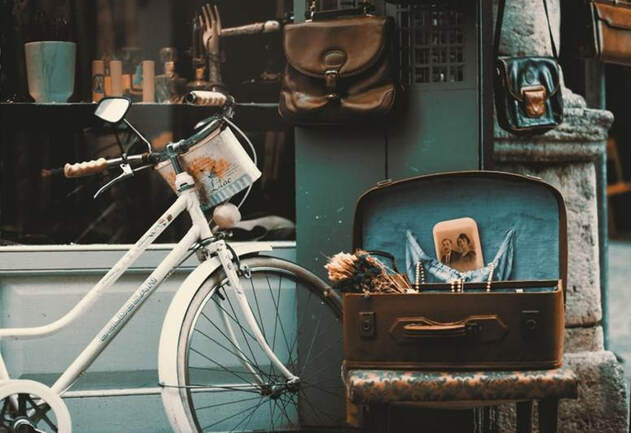 New York - Thrift stores, flea markets, second-hand stores, and garage sales have long been known as treasure troves for those seeking valuable and unique items. Despite the perception from many that these places only offer worn-out and past-their-prime goods, they often contain hidden gems that can hold considerable value, especially as baby boomers continue to divest themselves of goods and chattels in larger and larger numbers. For those in the antique and vintage business, many of these locations have long been a staple of supply when it comes to stocking up on their inventory. However, for an increasing number of dealers, 'recent finds' have made the trek to many of these venues all the more worthwhile, with some claiming multiple once-in-a-lifetime scores now happening on a far more frequent basis than in the past. For Karen Dowd, who works as a realtor in an upmarket rural area just outside of Boston, part of her business involves estate liquidations that can be required in order to finalize sale conditions for a home. Dowd says that over the past few years she's seen an incredible uptick in the number of baby-boomers who want to downsize quickly, with as little 'muss-and-fuss' as possible. "They're often in a rush to get into something smaller," she says, "and that can sometimes lead to them disposing of items en mass without a lot of consideration for what they're letting go of..." Dowd says that she helps as many of her clients as possible to keep family heirlooms from her exit-sales, but laments that many of them just want to be rid of the extraneous baggage, while others are simply 'okay' with whatever she can get for the goods. While Dowd acknowledges that she's no expert in antique and vintage items, and that her sales are just an added feature she offers her clients to help expedite their move, she also knows that plenty of undervalued items have slipped through the cracks. "I've sold numerous jewelry box-lots at sales that I'm sure probably had some legitimate gems in them, but like anything else, it just comes down to time," she says, "especially with so many boomers now listing and selling their homes." Dowd believes that for every sale she conducts today, almost half are probably not vetted as thoroughly as she'd like. "Five years ago we would have labelled and priced every single item, today, I'm lucky to do three-quarters of that - people are getting deals, there's no question about it." In order to understand why many in the decorative arts industry are claiming witness to the rising prevalence of undiscovered treasures in second-hand locales, you need look no further than the current data and history behind it, says Terry Wolmack, a leading analyst for online Estate Sale Listing companies. "It's important to understand the demographics behind the boomer phenomenon," he says, "this generation still constitutes a significant portion of the population, and as they enter their retirement years or downsize their homes, many are finding themselves overwhelmed with the task of decluttering and divesting possessions accumulated over their lifetime. This process often leads them to donate or sell items that may hold hidden value." As a result, says Wolmack, second-hand stores, flea markets, thrift stores, and garage sales have once again become prime hunting grounds for dealers not only seeking out more common inventory, but also for those rare and unique items that may have gone unnoticed by those presenting the sale. Wolmack noted that the main complaint he now gets most frequently on his quarterly survey-questionnaire to estate sale liquidators, is that they simply can't cope with the volume of goods they're having to divest, and the sorting process that goes along with it - especially when it's a boomer sale. Wolmack says that a lot of clients who use estate sale service websites as part of their business are acutely aware of the fact that it's also not just a capacity issue when it comes to understanding the fine print, but a knowledge issue as well. "If you don't have a good working background in antique and vintage items, then steals-and-deals are going to happen," says Wolmack, "it's just a function of how the marketplace works." 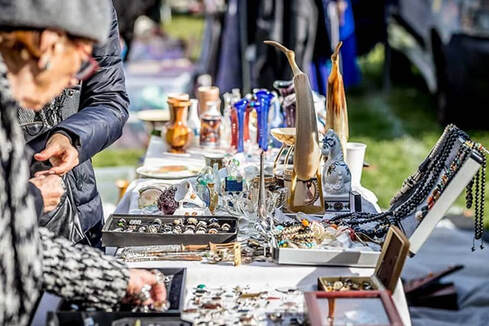 Hidden Gems Are Ending Up On Garage Sale Tables Hidden Gems Are Ending Up On Garage Sale Tables Carla Neal, a dealer and reseller on Etsy and OfferUp, believes that technological advancements are also playing a crucial role in the increasing prevalence of hitting the jackpot at many of these venues. "The advent of online platforms, such as eBay, Craigslist, and other online marketplaces, has revolutionized the way people buy and sell used goods," says Neal. "Baby-boomers, who are typically less tech-savvy than younger generations, often rely on more traditional methods of selling their belongings. Consequently, valuable items that could find a massive market online may end up at local thrift stores or garage sales instead." Neal says this creates an opportunity for astute buyers to uncover significant treasures that may have gone unnoticed by other sellers or enthusiasts. "I tend to scour the older boomer neighborhoods for garage and estate liquidation sales," she confides, "it's where I've made some truly outstanding finds." Neal says that on one particular outing recently, she came across a mid-century home that was heading to market, with the owners wanting to dispose of the chattels in a rushed curbside sale. "It was all the original furnishings and decorations from the mid-50s," she says, "I literally bought them out of house-and-home." However, Neal also believes that another factor influencing the greater number of 'super-finds' now occurring within the market is simply related to age. "The older people get, the less concerned they seem to be with possessions - it's of less value to them than time - and consequently they're often willing to let things go for far less than market value," she says. Sometimes it's just first-hand experience that leads to this conclusion, as Darla Hendricks discovered, when visiting her parents while helping them transition into a retirement home across the pond in England. "I'm actually in the antique business," said Hendricks, "so finding out that my parents, who were both prolific collectors of Art Nouveau throughout their lifetimes, were going to just give away most of their collection to charity stores came as a bit of a surprise to me." Hendricks says that she arrived just in time to stop the pick-up, and that while she couldn't afford the cost to ship the entire collection back to the States for herself, she was able to wrangle a deal with a number of local antique dealers for many of the better pieces. "They weren't being taken advantage of," she says, "it's just that they couldn't be bothered at their age with a complicated disposal process." Hendricks also recounted that many of the English antique dealers that she spoke with were also of the mind that a lot of good examples from long-held collections were starting to come onto the market. "I'm not sure if it's just the last generation of baby-boomers relinquishing their collections, or something else," said Hendricks, "but you definitely had the sense that many of these dealers were looking to buy entire collections, and were willing to pay top-dollar (or Pound) for them." For many in the industry, the baby-boomer generation is often seen as possessing items from periods that are considered retro or vintage by younger individuals. These items not only carry historical value but also represent a cultural and sentimental connection to the past. Younger generations, seeking to decorate their living spaces with unique and distinctive pieces, are drawn to these venues in the hopes of stumbling upon hidden gems that hold not only a personal nostalgia, but that can also lead to a substantial collectors value. Terry Wolmack perhaps best summarizes the theory by noting that, "It's understood that remaining boomer's are likely to have the choicest decorative arts collections in the world, so it's only natural that in those attic spaces and garage-wall storage shelves, you're also likely going to come across some of the best 'finds' in the world as well." - A.I.A. Staff Writers  NOTE: For readers seeking more information about the Asheford Institute Of Antiques distance-learning program on professional-level appraising, the study of antiques, collectibles, vintage and mid-century modern items, please click here to visit the school's Home Page. Should you have additional questions about the Asheford program, you can also write to the school at: info@asheford.com or call the Registrar's Office toll-free at: 1-877-444-4508. Quirky And Colorful, But Here To Stay? 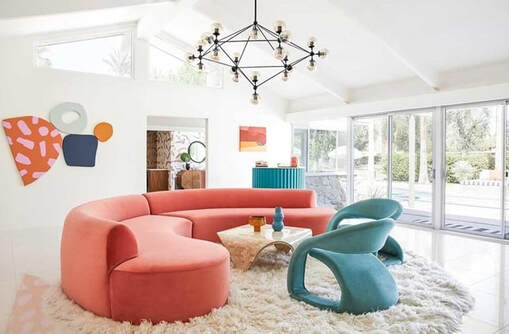 80s Exuberance & Style 80s Exuberance & Style New York - It wasn't that long ago that antique and vintage dealers everywhere were clamoring for anything Mid-Century Modern (MCM). Even poorly imitated copies of this twentieth-century motif were being snatched up as quickly as they were being produced. However, over the last few years, many in the decorative arts community have been noticing a change in tastes, one that seems to favor a shift away from the more austere lines of the MCM movement, and towards a more playful and vibrant aesthetic complemented by bold colors and a mish-mash of design elements. Known as the Memphis Design Style (MDS, or "New" Memphis Design Style), this peculiar and somewhat quirky decorative arts period from the 1980s seems to be having 'a moment' with many of today's vintage collectors and buyers. 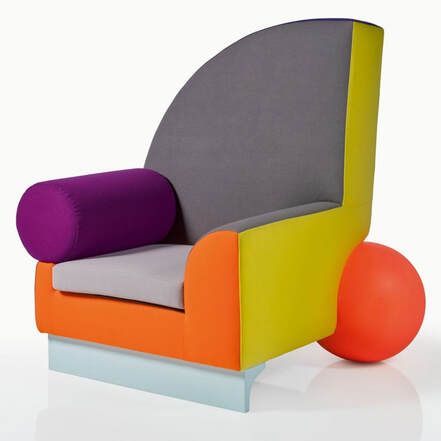 1982 Bel Air Armchair By Peter Shire 1982 Bel Air Armchair By Peter Shire Originally conceived by Italian architect Ettore Sottsass and twenty-two other like-minded colleagues, they formed the Memphis Group, also known as Memphis Milano, with an infusion of rebellious spirit directed against the prevailing design trends of the era. They rejected the sleek and streamlined styles such as mid-century modern and brutalism, opting instead for a more avant-garde approach. This group unveiled their innovative Memphis Style at the 1981 Milan Furniture Fair, the renowned Salone del Mobile. Their creations merged the influences of Art Deco and pop art, featuring audacious color palettes, daring geometric shapes, inexpensive materials, and patterns that clashed in a seemingly chaotic but deliberate manner. This audacious style garnered international recognition and polarized consumers, who either embraced or rejected it. Carey Saunders, a long-time vintage dealer from southern California, says she's been all in on the Memphis Style for a number of years now. Like many dealers on the west coast, Saunders says that she'd always been heavily invested towards MCM inventory in the past simply because of its salability. "For years that's all we sold," she says, "but I remember a time as a child when my folks had this 'look' in our two-story condo, so I started searching around for items that reminded me of that." Saunders says that by 2018, she'd amassed a fairly extensive collection and began to offer it for sale on her website under the Memphis Design Style moniker. "I had no idea it would be so popular," she conceded, "it literally took off from day one." It's not just young people either, according to Saunders, who says that while the design motif probably fits in with young modern urbanites more than anyone else, she's also seen it adopted by older collectors who have a sense of nostalgia for the 80s theme and time period. Colorful furniture like the Bel Air armchair by Peter Shire from 1982, symbolizes what Saunders believes is the essence of the Memphis Style. 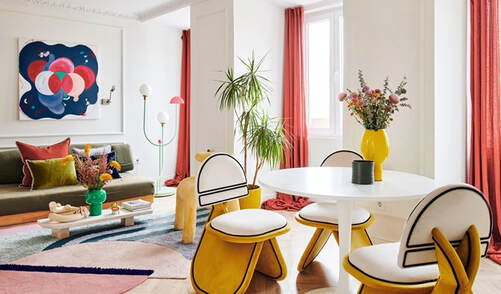 Toned-Down Memphis Design Stylings Toned-Down Memphis Design Stylings However, it's not just those in the antique and vintage business that are noticing the trend, says Trevor Albero, who works as a consultant for a Roma design studio with offices in both New York and Italy. "Many of the downtown buildings we refurbish and restore are also furnished by us as well," he says. "In the past that would often include a good number of MCM pieces, but today we're executing a lot of Memphis Design style elements into our overall approach." Albero feels that MCM has reached it's zenith with many of his firms clients, "They want something new, not necessarily linear, but something with a little more color and pizazz." Albero says he's also aligned with many others within the industry in the belief that nostalgia is one of the primary drivers behind the renewed interest in the Memphis stylings. "The 1980s was a period marked by a unique blend of exuberance, optimism, and innovation," he says, "as people look back on the decade with fondness and nostalgia, they often seem to be drawn to the design elements that evoked those spirited aesthetics." Albero believes that Memphis Design's signature use of vibrant colors and playful shapes resonates with those who have a deep-seated affection for the 1980s, and serves as a way to infuse a sense of nostalgia into contemporary living spaces. "Many people confuse the overt, over-the-top look of the Memphis Style with it's more refined and toned-down aesthetic that blends easily with other similarly themed pieces," he says, "it's all about balance." 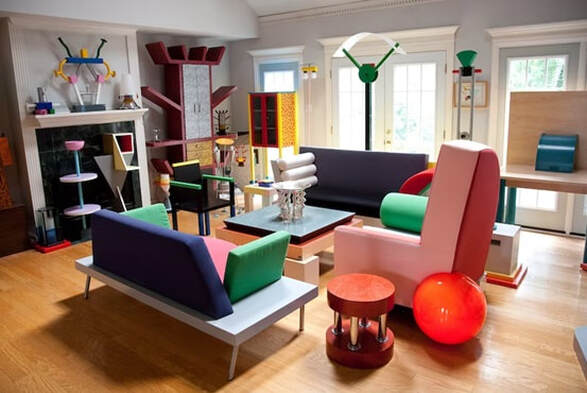 Too Radical For Mainstream? Too Radical For Mainstream? For Karen Smith, whose vintage resale business, and Miami interior design firm that preaches all things 80s, it's been a long road coming to where we are today. "I've always loved the crazy colors and design features that came with the Memphis Style," she says. "but it's clearly not for everyone." Smith says that there are definite demographics and geographic considerations related to this motif. "I don't think Memphis will necessarily work on a farm in Idaho as well as it would on South Beach," she says, "but then again, I wouldn't expect to find many antique or vintage dealers offering this type of décor in the heartland either." Smith says that up until about five years ago finding any authentic pieces from the 1980's was difficult, but that today she's seeing plenty of reproductions on previously themed MCM home furnishing sites like West Elm and even more mainstream companies like Wayfair. "At one point in time MCM was just about all I saw on these sites," she quipped, "but today there's definitely more choice, including a lot of Memphis stylings." However, even with the increase in demand, many antique and vintage dealers say they're going to take a 'wait-and-see' approach. For Pamela Arnold, who manages a group of vintage booths at an indoor antique mall near Chicago, it's all about scope. "Memphis Style may be having a bit of comeback," she says, "but the reality is that it wasn't that big of a movement to begin with, not like Mid-century modern was." Arnold feels that Memphis stylings will likely be much more regional in popularity than anything. "I can see both the coasts getting into this," she says, "but I really think it's a very particular type of décor that's going to have to be paired with a very particular type of home and individual." In the end, Carey Saunders also believes that the Memphis Style is likely to exhibit only a regional charm at first, in much the same way MCM did, but thinks it will slowly expand to other urban centers beyond just the coasts. "Memphis is a combination of nostalgia, a desire to break free from minimalism, and a fascination with unique and playful aesthetics," she says. The move toward artistic expression in interior design and the limited availability and rarity of original pieces is what Saunders sees as the likely fuel for growth. "If you look at the trajectory and reemergence of MCM," she says, "there are striking similarities as to where this might go..." - A.I.A Staff Writers  NOTE: For readers seeking more information about the Asheford Institute Of Antiques distance-learning program on professional-level appraising, the study of antiques, collectibles, vintage and mid-century modern, please click here to visit the school's Home Page. Should you have additional questions about the Asheford program, you can also write to the school at: info@asheford.com or call the Registrar's Office toll-free at: 1-877-444-4508. Have The Glory Days Of The 1980s Returned? 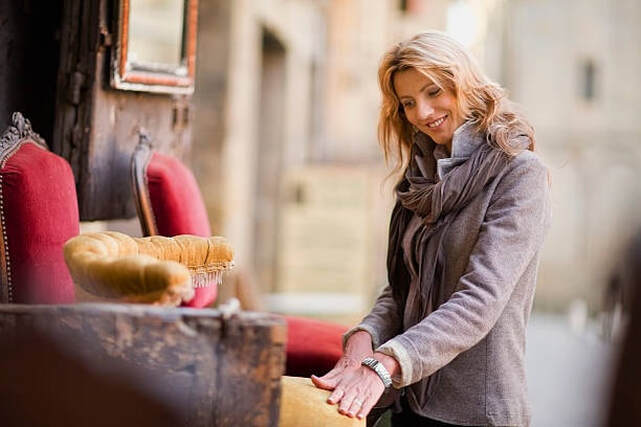 A New Generation Raises Awareness, And Prices A New Generation Raises Awareness, And Prices New York - It's not everyday that you hear longtime decorative arts dealers exclaiming the virtues of the antique and vintage business, but that's exactly what happened recently at one of the country's largest antique shows in Round Top, Texas, this year. With over eleven miles of vendors, Round Top has grown to become one of the most important national antique venues for serious collectors and buyers alike - rivaling even the famous thrice-yearly Brimfield shows for marketplace dominance. For those who took to the backroads of Texas to visit the festival, business was brisk. Very brisk, according to many of the well-established dealers who participated in the show. Robert Phillips, who's worked as a longtime industry reporter for a number of antique and decorative arts publications, wrote that he intended to spend most of the show interviewing dealers about what was selling best, but instead, came away surprised to find out that it was pretty much everything in their inventory that seemed to be moving. "Most dealers I spoke with were just stunned at the cross-section of buyers," said Phillips. "They were literally snapping up Mid-Century to Victorian and anything else in between." Phillips says that some of the older dealers whom he spoke with at the festival's close, had even begun drawing parallels to the golden-years of the industry back in the 1980s, when prices were at an all-time high. "It wasn't everyone, to be sure," said Philipps, "but you could just tell from many of the old-timers that it was like a cresting point - something they hadn't seen in almost forty years." 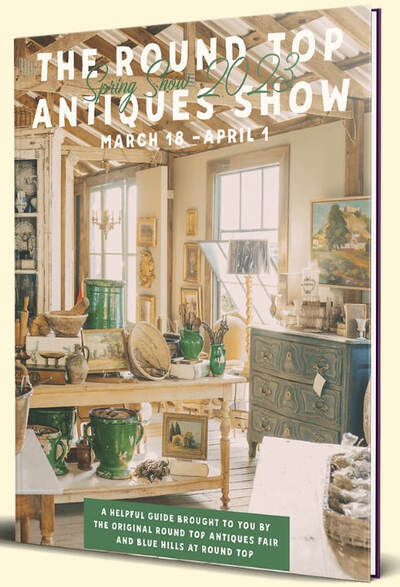 Antique Show Vendors Report Strong Sales Antique Show Vendors Report Strong Sales However, for those on the 'other side' of the table, like Andy Shelton, an avid collector of vintage and Mid-century lighting, who's been collecting for over three decades, it's become much more of a slog recently to score a deal. "I used to be able pick up good vintage pieces for peanuts," say Shelton, "but it's becoming increasingly difficult with more and more younger collectors entering the market." Shelton remembers a time not too long ago when there was virtually no one under thirty at Round Top, or almost any antique and vintage show for that matter. "Finding quality items at cheap prices was easy-peasy," he says. "Nowadays you're literally jostling with every beanie-capped, bearded hipster for standing-room only at the sales tables." Shelton admits that while it's getting harder to buy at reasonable prices, the flipside is that his own long-term collection has also soared in value. "A lot of the dealers are making good money now," says Shelton, "which is great in one way I suppose, because it'll allow them to sus out and offer up even better finds in the future." It's not that Shelton wants to pay more for his collecting habit he says, "It's just that I have to recognize current market conditions for what they are; not what I want them to be." For others though, it's not just the 'larger' shows that are witnessing the price increases, but many of the smaller venues as well. Becky Carlin, an east-coast dealer who shows at events from New York to Miami, says that prices for many items she used to discount have risen sharply in the last couple of years. "It's not every single piece," says Carlin, "but it definitely started with the Mid-Century craze and has gradually expanded into other areas." Carlin wasn't around during the heyday of the 1980's, but says she's heard plenty of other antique dealers talk about the "glory days," and thinks there's a pretty good chance we might be headed that direction shortly. "Most of my buyers are now young twenty and thirty-somethings," she says. "They've got the collecting bug and they're just starting to move into their maximum earning potential." Carlin says that five years ago rustic pine washstands and harvest tables wouldn't move for months, but that now she has a wait-list for some of these items. "It's a different buying aesthetic than what it used to be," says Carlin, "today's younger buyers are not just interested in price anymore, but also in the history behind the pieces." Taking that one step further, Don Holtz, a young entrepreneur who sells vintage furniture and retro-style decorative pieces on sites such as OfferUp and LetGo, says that it's no surprise that antique and vintage prices are rising. "The trend of going vintage has stormed onto the scene for a number of reasons," says Holtz. "Firstly, people are becoming more conscious about sustainable living and promoting the value of old items rather than buying new, and secondly, because of the uniqueness and rarity that many of these products afford." Holtz says that most of the queries he gets online related to his listings are from people in their twenties and thirties who want something different to decorate with, other than just the local flat-pack selection at their big-box store. "When I started selling, just before Covid began," says Holtz, "my prices were all negotiable - they had to be - I was selling stuff from the 1970s and 80s." Today, Holtz says he gets multiple bids on most pieces that he lists. "Prices have definitely gone way up," he notes, "especially for some of the older 70s white plastic modular stuff like tables and chairs." Working with a small budget at first, and not wanting to leave anything to chance, Holtz also formed a membership of online sellers into a group that were able to share information amongst themselves about market trends and sales when first starting out. "It's been a real eye-opener for us to see where things have gone," he said, "especially when comparing sales figures - which have jumped dramatically for all of us in the past three years." Holtz doesn't know exactly what to attribute the increase to, but like many others, feels that it's probably a combination of new buyers, who are also likely to have a new (and more sustainable) outlook when it comes to investing in the decorative arts. There are probably a multitude of yet-to-be discovered reasons for the recent resurgence in popularity (and rise in price) related to today's antique and vintage marketplace, and while this increase may not be reflected in absolutely every geographic region or area just yet, there can be absolutely no doubt that just like a rising tide, it will be coming. Or, as Mr. Phillips so succinctly summarized from his visit to the Round Top festival in Texas recently, "The allure of historical pasts is compelling, and antique items possess that aura of elegance that is very seldom found in modern-day products, making them not only extremely desirable, but available... for the right price!" - A.I.A. Staff Writers  NOTE: For readers seeking more information about the Asheford Institute Of Antiques distance-learning program on professional-level appraising, the study of antiques, collectibles, vintage and mid-century modern items, please click here to visit the school's Home Page. Should you have additional questions about the Asheford program, you can also write to the school at: [email protected] or call the Registrar's Office toll-free at: 1-877-444-4508. If Lawyers & Courts Have Their Way, The Answer Could Be Yes 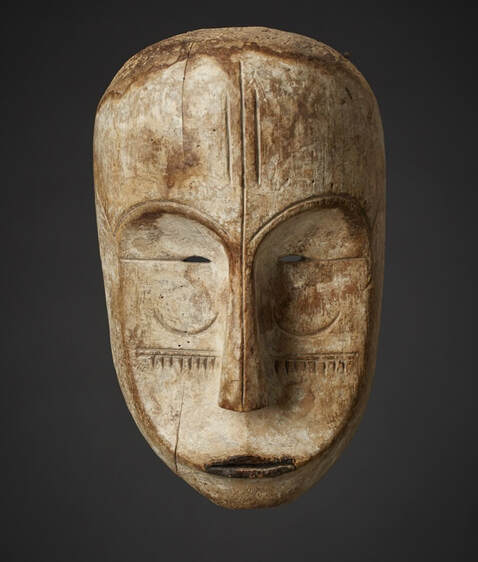 Does A Seller Have 'Rights' After The Sale? (Ngil Fang Mask) Does A Seller Have 'Rights' After The Sale? (Ngil Fang Mask) New York - In a captivating legal case currently being adjudicated in the French justice system, questions are being asked about whether individuals who've sold antiques or artworks later determined to have a significantly higher value can seek additional compensation over and above the original sale amount. The case revolves around an unnamed eighty-one year old woman and her eighty-eight year old husband, who stumbled upon an African mask while clearing out their vacation home. As the couple sorted through their belongings, most of which were destined for a garage sale, they decided to put aside an African mask and sold it to a local antiques dealer for a seemingly modest sum of €150, equivalent to approximately $157, in September 2021. However, several months later, while perusing their local newspaper, the couple was taken aback by the revelation that their once-unassuming mask had just fetched a staggering €4.2 million (approximately $4.4 million) at an auction in Montpellier for African art. From the auction records it was revealed that the mask was in fact an especially rare example of a Fang mask used in certain secret African rituals, and came with a fascinating history, having been brought back from Gabon by the husband's grandfather, a colonial governor in Africa at the beginning of the twentieth-century. With a growing sense of injustice, the elderly couple decided to take legal action against the antiques dealer who had purchased the mask from them. The core of their argument centered on the suspicion that the dealer had a much better understanding of the mask's true worth when he acquired it. The antiques dealer, for his part, did not put the mask on display in his shop. Instead, he sought appraisals from two auction houses, Drouot Estimation and Fauve Paris, which estimated the mask's value to be around €100–€120 and €400–€600, respectively. However, the dealer's decision to seek a third opinion from a specialized auction of African objects in Montpellier was a game-changer. After subjecting the mask to carbon-14 dating and mass spectrometry analysis, it was dated to the 19th century. An ethnologist's expert appraisal revealed its use in purification rites by the Ngil society, a secretive group within the Fang ethnic community in Gabon until the 1920s. The auction house subsequently placed the mask for sale with an estimated value of between €300,000 and €400,000, ultimately selling it for a remarkable €4.2 million. The couple's legal team believes that the sale should be canceled due to their honest misunderstanding of the mask's true value. The case draws parallels with other instances where owners of artworks have sought restitution after misattributions were corrected, as seen with paintings by Nicolas Poussin that were initially attributed to lesser-known artists. The legal battle has already gone through several stages, with the antiques dealer initially offering a settlement of €300,000 (approximately $315,000) to the couple, which they rejected due to their children's opposition, as revealed in court documents. The couple proceeded to file their case in a judicial court in Alès, seeking an injunction to seize the sale proceeds along with damages. A protective seizure was authorized by the Alès court and implemented by a bank in southwestern France. However, the lower court later ruled in favor of the antiques dealer, returning the funds to him and ordering the couple to pay him damages and other fees totaling €3,000 (about $3,148). Unyielding, the couple appealed the judgment to the higher court in Nimes in November. The ongoing legal dispute underscores the complexities of decorative art transactions, the responsibilities of buyers and sellers, as well as the evolving nature of valuing cultural artifacts. As the case continues to move forward, the appeals court in France has once again ordered the seizure of the sale proceeds, totaling €3.1 million, until a final judgment can be reached. David Rabinovitch, a New York based lawyer whose firm specializes in high-end contractual sale agreements related to the decorative arts, believes that the case now unfolding in France could have a far reaching impact not only in Europe but in the U.S. and Canada as well. "It's obviously not precedent setting for us," says Rabinovitch, "but there's no doubt that judges will at least look to examples like these for input and direction when it comes to their own cases." Rabinovitch thinks the outcome of this case could also have a broader effect on the responsibilities and obligations of antique dealers and art market participants from around the world, further highlighting the fine line between someone scoring a deal, and someone ending up in a lawsuit. "We read about these great largesse finds happening all the time," Rabinovitch says, "but what about the more pedestrian examples of someone selling a houseful of Mid-century modern furniture for twenty-bucks... are they now entitled to a share of the dealer's profits as well?" Rabinovitch thinks that we'll end up having to draw the line somewhere, but that it will likely come as a series of court judgments first before anything else truly gets resolved. "It's just a matter of time,' he says, "all industries eventually get regulated to some degree." - A.I.A. Staff Writers  NOTE: For readers seeking more information about the Asheford Institute Of Antiques distance-learning program on professional-level appraising, the study of antiques, collectibles, vintage and mid-century modern, please click here to visit the school's Home Page. Should you have additional questions about the Asheford program, you can also write to the school at: info@asheford.com or call the Registrar's Office toll-free at: 1-877-444-4508. The sustainable eco-generation wants you to know they're in it for the long-haul 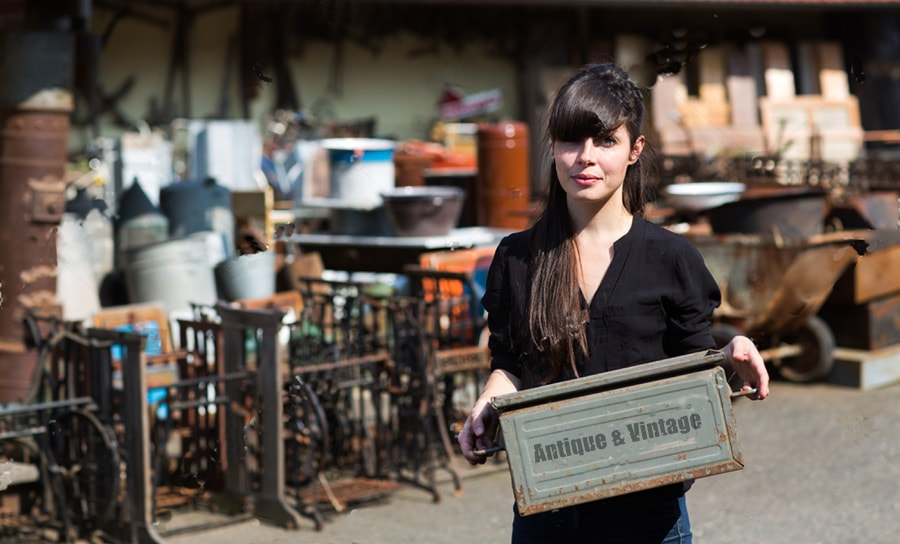 New York - For Janie Roan, the 4 a.m. start time was all part of the bargain as she trundled out of her Brooklyn based apartment in the hopes of making it to Maine by opening time for one of the state's annual fall antique and vintage fairs. "There's a beautiful butternut chest of drawers being offered by a dealer up there," said Roan, "that's hopefully still going to be there when I arrive." Roan certainly isn't unusual in her early morning quest for that perfect piece of furniture, but what is unusual about this particular scenario is her age and previous interests as they relate to the decorative arts. Growing up in Brooklyn, the 28 year old says that in the past her primary source for decorating often involved a trip to Ikea or Crate & Barrel. "Flat-pack furniture was just part of my generation," says Roan, "but somewhere along the way, it just started to shift and align with my ideas about sustainability and creating a living space that felt warm and cozy rather than austere and cold." Prioritizing her belief in a balanced socio-economic future, Roan says that her discovery of buying 'old and used' items came to be somewhat revelatory. "I simply had no idea there were so many unique designs and pieces from the past that were out there and still available for purchase," she says, "it was almost like the lifting of a veil." While Roan's personal collection has grown over the past few years, she also acknowledges that many of the items that are of interest to her today are becoming harder and harder to afford. "Five years ago when I first started searching for antique three-drawer chests, they were cheap, very cheap," she says. "Today, that butternut chest I was chasing would have likely been gone before noon if I hadn't gotten there early." Roan adds that with many of her friends now accompanying her on the early morning upcycling adventures, it's become both a boon and a bane for her collecting passion. "It's great that we can all share a ride together," she says, "but my friends are also the one's helping to drive up the prices." Many dealers in major urban centers are likely to concur with Roan, as prices have been escalating quickly on almost everything from Early American rustic to even semi-ornate Victorian pieces. Jonathon DeVries a long-time dealer from Newport, Rhode Island, who frequents and displays at antique shows up and down the Atlantic coast, says that he's witnessed an explosion in interest and prices over the last three or four years that he attributes directly to a younger generation. "It's even younger than the millennials," he says, "we're getting kids in their early twenties who are becoming primary buyers." DeVries thinks that while millennials may have started the trend, it's definitely Gen-Z's who are moving the ball forward today. "Things like Pyrex and Corning Ware dishes, that we used to give away, have recently jumped up in value so quickly that we're not even sure what to price it at anymore," he says. However, it's not a straight across-the-board value increase for everyone acknowledges DeVries, with some of his dealer friends inventory still languishing at the end of shows. "If you're trying to sell giant over-sized Victorian pieces to the younger generation living in apartments or condos, then you're going to be missing the boat," he says, "but if you stick to the smaller items like washstands and side tables, they'll move quickly." Henry McDavid, a young dealer from New Hampshire who now specializes in antique spool furniture, says that he started in business as a 'picker' when just out of college in his early twenties. "Heading out of 2010 probably wasn't the best of decades for antiques, that's for sure," he says, "but one thing that was great about that time was the price." McDavid quipped that he could literally buy out-of-favor items like Victorian and early spool furniture for pennies on the dollar, and in many cases for free as long as he agreed to haul it away. "It's astounding to think," he says, "because today, I can't keep these pieces in stock." McDavid acknowledges that even items like odd sized spindle beds that require specially sized mattresses are usually spoken for long before hitting the showroom floor. "I'm lucky that I had sufficient storage to keep these pieces for a later day," he says, "but in reality, it was also just good timing that a younger generation came along and were interested in this kind of stuff." McDavid says he's long been trumpeting the news that buyers are much younger now than before, and seem to be more aggressive when it comes to getting what they want. "Five years ago people were making lowball offers or asking for a markdown, today it's a bidding war, and they're usually under the age of thirty." While McDavid's listing prices on his spool-themed website have risen sharply in recent months, he's also quick to point out that that it won't take long for source sellers to start raising their 'asking' price. "I was ahead of the curve," he says, "but I doubt those same folks will be letting me haul it away for free again." 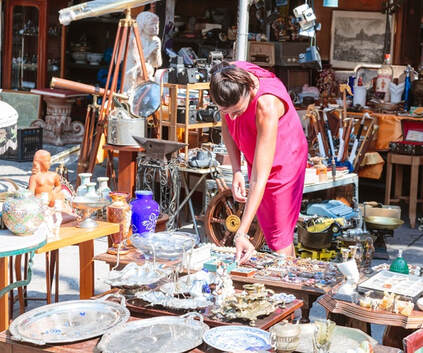 Young Buyer's Hold Court At Brimfield Young Buyer's Hold Court At Brimfield Nostalgia is in says Emily Harris of the collectors co-op, a loosely knit group of store owners on Etsy that come together to share tales of buy-and-sell stories with the intent of targeting specific offerings to prospective clients. "It just keeps getting younger," says Harris, "we're almost solely concentrating on online buyers in their mid-thirties and below now because that's who's driving our sales." Items like wall, chandelier, and furniture-top lighting are all seeing steep price increases due to demand says Harris. "We're buying from salvage yards, home-reno companies and more, and we still can't keep pace." While Harris says she's happy to ride the skyrocketing values, she wonders when the rising price-point on vintage home décor is going to peak. "It's not really sustainable," she says. "I'm seeing young people paying upwards of four times for an item that I had listed for a quarter of that price only a year ago." Harris believes the post-pandemic need for a world that's more comforting and inviting, rather than minimalist and modern is at the root of the younger generations 'buy-old' craze. "I think the pandemic maybe showed just how vulnerable our modern world was," she said, "and why those ties to the past can be so enticing." 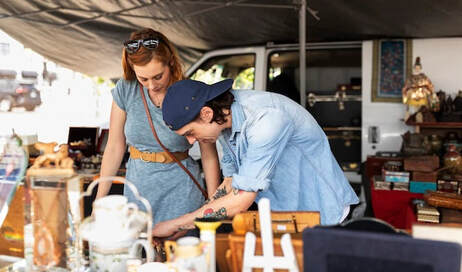 New Generation Of Flea-Market Attendees And Dealers New Generation Of Flea-Market Attendees And Dealers If anyone has need to question who the new demographic is when it comes to the decorative arts, then look no further than the world famous antique and vintage market at Brimfield, says Don Smith, a semi-retired dealer who notes that in his estimation, the attending crowds at Brimfield have turned from mostly blue-hairs and hats in recent years, to inked and ear-budded. "I've been attending, and sometimes showing for over thirty-years," says Smith, "and I've never seen so many youngsters clogging the aisles and booths." Smith isn't alone in his estimation either; David Orr, who's also a regular at Brimfield, and writer at large for a number of decorative arts publications, says that you can see the influence of this generation in the offerings. "Things that weren't even thought of as being collectible just a few short years ago, like 1980s homewares, are suddenly demanding exorbitant prices now - even by show standards." Orr says that he's interviewed numerous 'progressive' dealers from this year's show recently, and they all tend to tell a similar story, "Prices are good, very good." Adding to this, many young dealers are also reporting that hot and in-fashion used furniture websites such as Chairish and Kaiyo, are also helping to up the price-points on antique and vintage goods by making it easier for people to see that their mother's old Formica kitchen table from the 70's, might actually be worth more than a simple donation-receipt from the local thrift store. Sites like Craigslist are even showing higher priced comparative examples from other websites, when you search their site for a similar item. When all of this is combined say dealers, it's going to push up prices. Scott McAdams, who works for one of the largest flea markets on the west coast, says that most of his dealers are young and extremely tech savvy. "They'll show prospective customers what something is worth on their phone or laptop so they can compare prices to online sites instantly." McAdams notes that it's not just the dealers who've become younger at his venue, but also the attendees. "What's funny," he says, "is that despite the technology use, the prices aren't going down, but up, way up." For many in the business though, rising prices (even inflated ones), are a welcome relief, and hopefully a portent of a return to a long and secured stretch of interest and pricing in the world of antique and vintage decorative arts. While some may lament the uncertainty that comes with such price hikes, if Janie Roan's passion for her butternut chest-of-drawers is any indication of that generation's long-term interest, then there's also a decent chance the rest of us in this industry are going to be in good hands for some time to come. - A.I.A. Staff Writers NOTE: For readers seeking more information about the Asheford Institute Of Antiques distance-learning program on professional-level appraising, the study of antiques, collectibles, vintage and mid-century modern items, please click here to visit the school's Home Page. Should you have additional questions about the Asheford program, you can also write to the school at: info@asheford.com or call the Registrar's Office toll-free at: 1-877-444-4508. According To One Expert It's Already A Fait Accompli  Will New Tools Help Us Learn More? Will New Tools Help Us Learn More? New York - While tech giants and government officials may currently be debating Artificial Intelligence's (AI) largescale use and application amongst the world's citizenry, for people like Cameron Newley, it's AI's influence on smaller more niche related industries, such as the decorative arts, that has him contemplating some potentially significant marketplace changes that could result from this evolving technology. As a longtime researcher and technical collaborator who's worked within the field of Artificial Intelligence for over ten years, Newley says he has a unique perspective on how this burgeoning technology may end up affecting the antique and vintage community in years to come. While his area of academic credentials upon first glance may appear to lie in more scientific pursuits, Newley acknowledges that his real joy and passion comes from collecting and selling antiques; especially Victorian oils and watercolors along with early Art Nouveau posters. "I'm a collector at heart," he says, "my family was in the business, so dabbling in antiques and selling on-the-side has always come naturally to me." However, Newley also concedes that he's put some considerable time into analyzing the potential relationship between AI and the decorative arts over the past few years, as a natural twinning of his professional and personal interests. "There's no question that Artificial Intelligence is going to revolutionize the antique and vintage industry in various ways," says Newley, "from reshaping the way collectors, sellers, and enthusiasts interact with historical artifacts, to profound effects impacting authenticity assessments, pricing, market accessibility, and even conservation efforts." One of the most significant impacts of AI that's going to happen within the antique and vintage community says Newley, is likely to be its role in authenticity assessments. "AI-powered tools and machine learning algorithms can now analyze images, historical data, and item descriptions to identify genuine pieces from reproductions or fakes." Newley believes this will help collectors and sellers make more informed decisions, reducing the risk of purchasing counterfeit items. "AI can detect subtle details that are difficult for the human eye to discern," he says, "such as variations in brush strokes on a painting or the intricacies of a piece of antique jewelry." As a result of these advanced algorithms, Newley thinks it will eventually make the antique and vintage market a more trustworthy and secure space from which to conduct business. Another consideration that Newley believes will factor heavily into AI's future role within the decorative arts market relates to pricing. For many in the industry, including himself, putting a price on antique and vintage items has always been somewhat of a challenging task, influenced by factors such as rarity, condition, and historical significance. However, Newley notes that the latest AI algorithms can now process vast amounts of historical sales data and market trends to provide more accurate pricing recommendations almost immediately. "Collectors and sellers will be able to leverage AI-powered pricing tools to determine fair market values and set competitive prices for their items." he says. "This will not only benefit individual buyers and sellers but should also contribute to the overall transparency and efficiency of antique and vintage markets in general."  AI Enhanced Personal Recommendations AI Enhanced Personal Recommendations Another interesting facet that Newley revealed from some of his latest research was the improved online market accessibility related to searching for various genres or items grouped under the general decorative arts heading. "Online platforms and marketplaces use AI to curate personalized recommendations for collectors, suggesting items that match their interests and preferences," he says, "These recommendations are based on a user's search history, previous purchases, and browsing behavior." All of which, according to Newley, when aggregated together, and then applied using a new set of algorithms, have enhanced most users overall browsing experience, making it easier for collectors to discover new items and expand their collections. However, it's not just the browsers that are advancing says Newley, while most of us are familiar (and quite likely frustrated) by online Chatbots that promise to help in lieu of an actual person, Newley says that those days of souless-conversation boxes will likely be coming to an end shortly, as the latest batch of online Chatbots are now being heavily infused with AI abilities, making them much more than just a customer support automaton. "AI-driven chatbots and virtual assistants are increasingly being used to provide detailed and complex answers to customers," says Newley. "These AI-powered tools will be able to assist potential buyers in their inquiries, offer historical context about antique pieces, and even provide information on similar items that may be of interest." Newley feels that this will inevitably make the antique and vintage market more accessible to a wider range of potential buyers who may not have had any previous or specialized knowledge in the field. "It's a way to give customers a lot more instant, and in-depth information related to a pre-purchase than they ever had before" he says. Finally, Newley believes that conservation efforts within the antique and vintage industry will also benefit from AI technology, as it will be able to assist in the restoration and preservation of historical artifacts. For example, AI-powered image recognition will help conservators identify damaged areas in paintings or sculptures and suggest appropriate restoration techniques. Additionally, AI can also aid in the analysis of materials, helping to determine their age and origin, which Newley says is crucial for preservation efforts. However, while AI brings numerous advantages to the antique and vintage landscape, it also raises some challenges and concerns, says Newley. "The overreliance on AI for authenticity assessments, pricing, and market recommendations may lead to a reduction in human expertise and judgment" he says. "Collectors and sellers need to be cautious and continue to value the insights of accredited experts within the field." Additionally, Newley believes that there are also some privacy and ethical considerations surrounding the use of AI within the decorative arts community. The collection and analysis of user data to make personalized recommendations raises questions about data security and consent. "It's essential for companies to address these concerns," he says, "to ensure that the use of AI technology is being implemented in a responsible way." In the end, Newley believes that Artificial Intelligence is likely to have a profound and lasting effect on the antique and vintage industry; impacting authenticity assessments and pricing, along with marketplace accessibility and conservation efforts. While Newley feels that these changes will no doubt enhance the overall efficiency and accessibility of the antique market in the long-run, he also acknowledges that it's likely to bring challenges related to human expertise and ethical considerations. "We have to be mindful of the fact that just as Artificial Intelligence is going to evolve, so must we in the decorative arts as well." - A.I.A. Staff Writers  NOTE: For readers seeking more information about the Asheford Institute Of Antiques distance-learning program on professional-level appraising, the study of antiques, collectibles, vintage and mid-century modern, please click here to visit the school's Home Page. Should you have additional questions about the Asheford program, you can also write to the school at: info@asheford.com or call the Registrar's Office toll-free at: 1-877-444-4508. Industry-Insiders See Changing Market Trends  Is MCM Décor Trending Down? Is MCM Décor Trending Down? New York - Mid-century modern décor (MCM), known for its clean lines, simple shapes, and sleek materials, has often been credited with not only reviving the antique and vintage business over the past twenty years, but has also (according to many in the industry), singlehandedly been responsible for driving the direction of today's general decorative arts scene towards a more modern motif. However, recent market shifts suggest that this timeless aesthetic may have begun to lose some of its charm and appeal among those in the market for vintage and antique furnishings. All of which raises the question of why this staple of early 21st century décor suddenly seems to be falling out of favor? One plausible reason for this shift in consumer preferences is the saturation of the mid-century market, at least according to Trevor Watson, who works for a leading online research firm that studies evolving commercial buying trends amongst consumers. With the increasing prevalence of mid-century-inspired furniture and décor in mainstream commercial outlets, Watson says that the once exclusive and unique items often associated with the mid-century motif have now become more commonplace. "From big-box stores to online retailers, affordable replicas of iconic mid-century pieces have flooded the market, diluting the desirability of the genuine vintage pieces," says Watson, "If it's easily available to everyone, then demand across the board is bound to eventually drop." However, on the flipside of the coin, Watson says that you can also look at aggregated past sales results and see that as the trend for MCM escalated, demand outweighed supply, leading to inflated prices for original mid-century items. Vintage pieces by renowned designers, like Charles and Ray Eames or Eero Saarinen, fetched exorbitant sums, making them less accessible to the average buyer. Watson believes that this hyperinflation also created a barrier that restricted many enthusiasts from engaging in the mid-century market. "For some it just became too pricey after a while, so they ended up moving on to something else." Natasha Stevens, who works as a consultant for a top design and decorating firm in New York, says that another factor contributing to the general decline in MCM's popularity is likely related to changing interior design trends and the emergence of new styles. "Décor preferences are cyclical," says Stevens, "with different decades and aesthetics experiencing periodic resurgences." Steven's notes that in recent years, traditional designs, rustic and early American plain-and-pine minimalism, along with bohemian styles, have all gained prominence within the decorative arts community, captivating the attention of buyers who are seeking a departure from just the mid-century look. "It's somewhat of a balancing act," says Stevens, "it's not a complete withdrawal of the mid-century theme, but it's definitely a retreat." 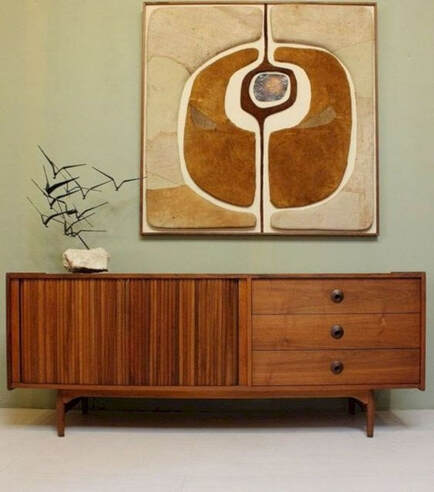 Regional Popularity? Regional Popularity? For many, the question of MCM's ongoing popularity has always been related to geography, at least according to veteran California antique dealer Derek Tanner, who says that over time he's begun to see a reduction in interest at his California shop, as well as at many of the booths in the state's largest antique mall. "Three years ago the 57th Street Antique Mall was jammed with MCM," says Tanner, "but today, I'd say that number is half." Tanner acknowledges the mid-century vibe was always more popular on the west coast than the east, but says that even west-coasters are now beginning to see a diminished demand for many of these pieces. "A lot of the shoppers who hit my store often have unique and personalized spaces that reflect their individuality," he says. "While mid-century décor has a distinct identity, its extensive popularity and replication have made it less exclusive." As a consequence, Tanner thinks buyers who desire distinctive surroundings are exploring alternative styles that are less saturated and more reflective of their personal taste. 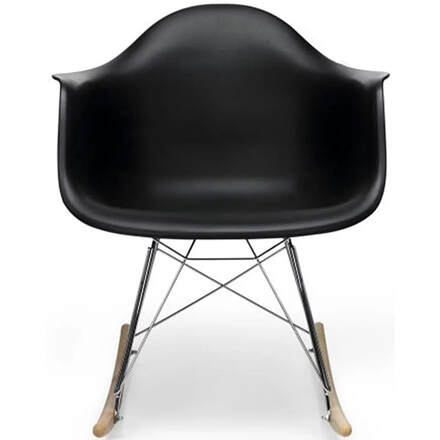 Mid-Century Plastic Repo Chair From Walmart Mid-Century Plastic Repo Chair From Walmart Alongside changing trends, societal and environmental concerns have also likely played a role in the shift away from mid-century décor. Janet Holloway, a millennial who operates three Etsy stores, thinks that her generation, who form a significant portion of today's buyers' market, tend to prioritize sustainability and ethical consumerism over just outright style. In contrast, mid-century décor, with its heavy use of plastics, synthetics, and a certain degree of non-sustainable materials, does not necessarily align with their eco-conscious values. "It's not that millennials don't dig MCM," says Holloway, "I think they do, but it can be hard to reconcile promoting a trend that's currently remaking items en masse from an era that used environmentally questionable materials - at least by today's standards." Holloway also thinks that an increased focus on locally sourced and handmade items which are often absent in mass-produced mid-century designs, adds to this deviation in consumer behavior. "It's certainly not all millennials who feel this way," she says, "but there has definitely been a perceptible shift from my clients away from the MCM only mantra." Dara Marcheski, who's been selling vintage décor, both online and off, for over twenty years, thinks that it's not only a new environmental consciousness that's gripping today's buyers, but also the availability and access to new styles and periods. "When I first stated out in 2000," says Marcheski, "Mid-century was just becoming the rage. The Internet wasn't at full steam yet, so it took longer for trends to take hold or change." However, Marcheski says that with the rise of online platforms and the ease of virtual shopping, buyers have now gained access to a broader range of vintage and antique styles than they ever had before. Consequently, their preferences have diversified and expanded beyond just mid-century modern. "From Victorian furniture to industrial salvage, the options available to vintage enthusiasts today are far more plentiful," says Marcheski, "which of course encourages them to explore other eras and aesthetics." From this, it would appear then that several leading factors may be contributing to the decline in popularity of mid-century décor among antique and vintage buyers. The saturation of the market, inflated prices, changing design trends, a desire for uniqueness, sustainability concerns, and increased access to alternative styles have likely all had some form of influence on this shift. As antique and vintage markets continue to evolve however, new aesthetics will come to the forefront, and while mid-century modern décor might currently be experiencing a decline, it will only be a matter of time before it makes a comeback - especially when consumers once again begin seeking a return to a nostalgic and retro-inspired future. - A.I.A. Staff Writers  NOTE: For readers seeking more information about the Asheford Institute Of Antiques distance-learning program on professional-level appraising, the study of antiques, collectibles, vintage and mid-century modern items, please click here to visit the school's Home Page. Should you have additional questions about the Asheford program, you can also write to the school at: [email protected] or call the Registrar's Office toll-free at: 1-877-444-4508.NOTE: For readers seeking more information about the Asheford Institute Of Antiques distance-learning program on professional-level appraising, the study of antiques, collectibles, vintage and mid-century modern items, please click here to visit the school's Home Page. Should you have additional questions about the Asheford program, you can also write to the school at: [email protected] or call the Registrar's Office toll-free at: 1-877-444-4508. M-Gen Reveals Hottest Must-Have Summer Buys 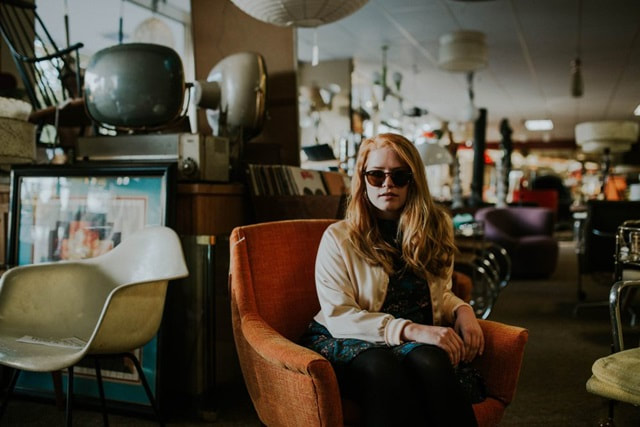 Millennials Get Their Say Millennials Get Their Say New York - It's no secret that over the past decade the antique and vintage industry has experienced a resurgence in popularity, with millennials being a significant factor in driving this trend. While some may argue that younger generations are more interested in digital experiences than actual possessions, numerous studies and sales reports from those in the decorative arts world would seem to contradict this assessment, suggesting instead, that millennials have now become the industry's single biggest purchaser of antique and vintage goods, and are well on their way to becoming the largest attending demographic group at many of today's antique and vintage fairs in both North America and Europe. With that information in-hand, we decided to reach out to a number of top millennial dealers for some insight on expected antique and vintage trends that might turn hot at sales-booths and display-tables across the nation this summer. 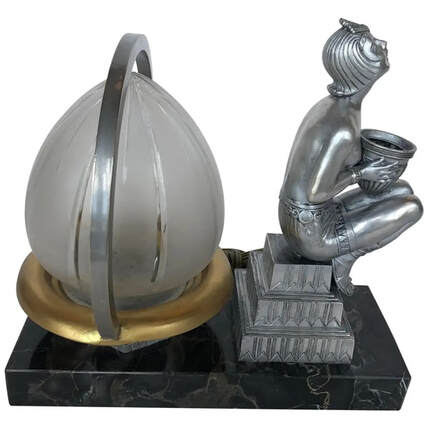 Art Deco Art Deco Jennifer Harper - Dealer, Curator and Online Sales Platforms "As a millennial, I've always had a deep appreciation for authenticity and a yearning for nostalgia. Growing up in a digital age, where everything was mass-produced and easily accessible, I tended to crave unique and meaningful experiences. Over time, I began to find that antique and vintage items offered a connection to the past, embodying a sense of history and craftsmanship that I found resonated with my generation as we got a little bit older. These past few years, I've noticed that more and more buyers are my age, and they're not just interested in MCM (Mid-Century Modern), but other collectible areas as well" Harper's choice for this summer's top picks are Art Deco and Costume jewelry. "The glamour and sophistication of art deco jewelry remains highly sought after," says Harper. "Search out bold geometric designs and the use of precious stones that evoke the opulence of the 1920s and 1930s. Be on the lookout for necklaces, bracelets, and rings featuring stones set in platinum, gold or silver." While Harper acknowledges that not every millennial can afford such pieces, she thinks Costume jewelry can be an attractive alternative for younger buyers. "It's selling hot right now," she says, "especially at shows and fairs." 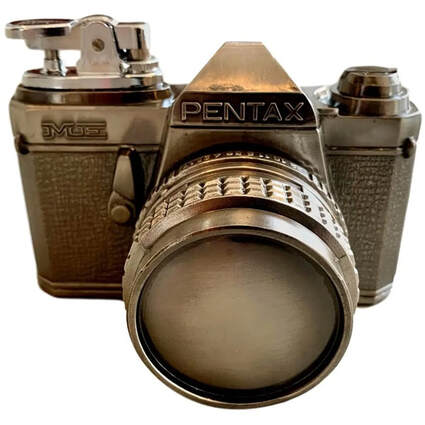 Vintage Cameras Vintage Cameras Larry Cousins - Etsy, TIAS and Brick & Mortar Dealer "Even though I grew up in a throwaway culture, concerns about environmental sustainability and ethical production practices were always issues I was interested in, which is probably why I gravitated towards the antiques and vintage business. As someone who is conscious of the impact of my consumption on the planet, opting for a decorative arts business simply aligned with my values of reusing, recycling, and reducing waste. By embracing many of these timeless pieces and putting them back into the marketplace, I think it contributes to a more sustainable and circular economy." Cousin's top picks for summer buys are vintage vinyl records and cameras. "Vinyl records have experienced a resurgence in recent years," says Cousins, "from classic rock to jazz and blues, original pressings and limited editions from iconic artists like The Beatles, Pink Floyd, and Miles Davis are commanding high prices among enthusiasts." Cousins says that millennials also seem to appreciate the charm and craftsmanship of vintage cameras. Classic models from brands like Leica, Nikon, and Hasselblad are highly coveted. Cousins recommends seeking out cameras with iconic designs, quality lenses, and working mechanisms, as these types of cameras offer both functional and aesthetic value to collectors. 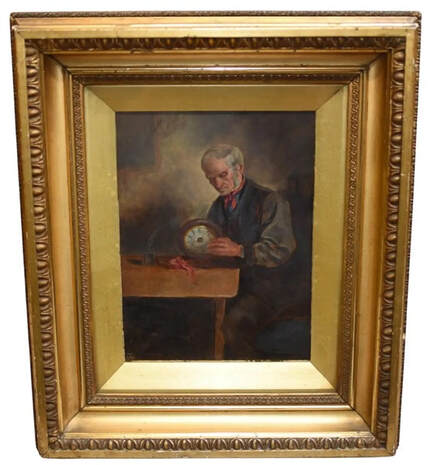 Victorian Oils Victorian Oils Donna Perkins - Dealer Cooperative Manager, Online Sales Platforms and Antique Shows "Part of what initially motivated me to get into the decorative arts business was the sense of personal expression. I think as a group, millennials value self-expression and individuality, seeking to differentiate themselves from mass consumerism. Antique and vintage items provide a way for us to express our unique style and personality. Whether it's through clothing, furniture, or accessories, these items allow us to curate our spaces and wardrobes with one-of-a-kind pieces that stand out from mainstream trends." Prekin's top picks for summer buys are textiles and Victorian oil paintings "Vintage textiles, such as quilts, tapestries, and embroidered fabrics, offer a glimpse into the craftsmanship and artistry of past eras," says Perkins, "and have been a hot seller recently." According to Perkins, buyers should be looking for textiles made from luxurious materials like silk or velvet, featuring intricate patterns or representing some form of historical significance. Additionally, Perkins says that while MCM furniture décor may still be popular among many of her cotemporaries, she notes that tastes in wall-art are beginning to change. "Many of our co-operative dealers are selling out of Victorian oils faster than they can replace them," she says, "even portraits and ornately framed examples are moving well." Perkins says that while you typically don't think of Victorian 'anything' as being in the wheelhouse of her generations interests, she's noticed that things are definitely beginning to move in a different direction, as older millennials like herself are reaching further and further back into the past for more interesting and unique pieces. "I think it's a bit of a desire to mix and match some 'contemporary' antique stylings like Art Deco, with slightly older pieces that are perhaps a bit more formal in nature," she says. 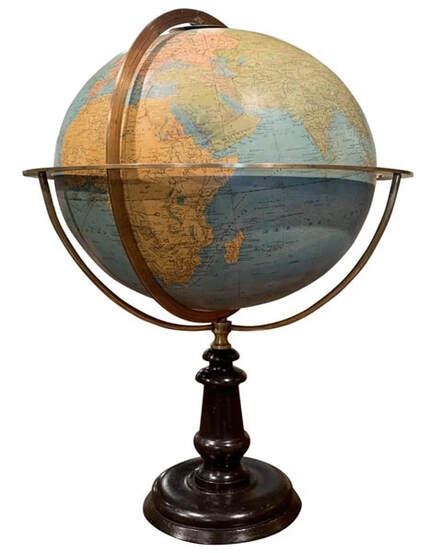 Antique & Vintage Globes Antique & Vintage Globes David Halston - Dealer, Picker, Estate Sales Agent and Online Sales Platforms "I grew up hearing wonderful tales from my Grandfather about his past, and I think it was that great storytelling that probably piqued my interest in the decorative arts world. I've always found that antique and vintage items tend to carry stories and evoke a sense of nostalgia that often sparks conversation and connection. As a millennial, I'm drawn to the narratives behind these objects, it's something I can appreciate - especially the historical context and the human stories they represent. Sharing these stories with friends and family becomes a way to forge connections and foster a sense of community." Halston's top pick for summer buys are antique maps and globes. Halston believes that old maps and globes from bygone eras can not only be a captivating addition to someone's collection, but they also tend to be great conversation starters about the past. "Look for antique maps that showcase historical regions, discoveries, or cartographic advancements," he says. "Globes that reflect the geopolitical landscape of the past can be particularly intriguing. These pieces serve as windows into how the world was once perceived." Halston says that while maps and old globes were at one time relatively easy to find, it's become increasingly harder to source decently priced inventory. "Younger folks are into it now," he says, "which has obviously driven up prices." For the best deals, Halston says he frequents garage sales in predominately senior neighborhoods, and then resells online. "Most of my buyers are probably in their early to mid-thirties," says Halston, "but they seem to be interested in almost all eras and genres related to map collecting and globes." 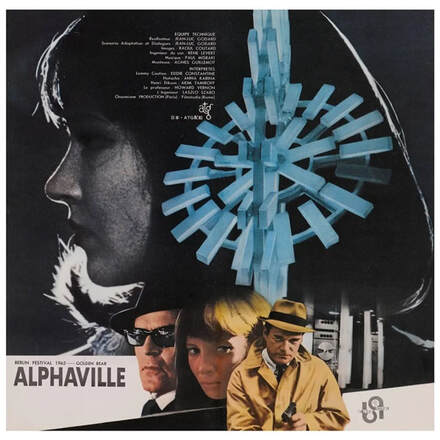 Classic Movie Posters Classic Movie Posters Suzanne Olsen - Online Sales Platforms, Antique Shows & Fairs "Part of my introduction into the antique and vintage world came about as a result of my desire for experiences rather than mere transactions. Antique and vintage stores provide an immersive and nostalgic shopping experience that appeals to many from my generation. For millennials, exploring these unique spaces, browsing through curated collections, and interacting with knowledgeable sellers seems to add an extra layer of enjoyment and engagement to the buying process." Olsen's top picks for summer buys are old movie posters and textured ceramics. "Our generation loves streaming - whether it's a new series or old films - we're all about the experience," says Olsen. Which is why she thinks millennial film buffs and collectors often seek out classic movie posters as both nostalgic décor and as a valuable investment. Original posters from iconic movies like Casablanca, Gone with the Wind, or Star Wars are all highly sought after. Olsen says to make sure to look for posters in good condition and with desirable artwork or promotional designs. On the more practical side, Olsen says she's also seen a marked uptick in intertest recently related to textured ceramics. "Look for handmade ceramic vases and sculptures with attractive glazes and colors. The natural material and unique shapes and textures can add a warm and personal accent to tables, cabinets, counters, and shelves." As millennials continue to drive interest in the antique and vintage industry through their desire for unique, authentic, and sustainable products, there's probably never been a better time (nor reason) for keeping tabs on this socially active generation than now. With their emphasis on individuality, environmentalism, and quality, these younger consumers are not only contributing to the rising popularity within today's antique and vintage marketplace, but will also likely have a say in shaping its direction for years to come. - AIA Staff Writer's  NOTE: For readers seeking more information about the Asheford Institute Of Antiques distance-learning program on professional-level appraising, the study of antiques, collectibles, vintage and mid-century modern items, please click here to visit the school's Home Page. Should you have additional questions about the Asheford program, you can also write to the school at: info@asheford.com or call the Registrar's Office toll-free at: 1-877-444-4508. Don't Throw Shade On That 70s Dorm Room Décor Just Yet 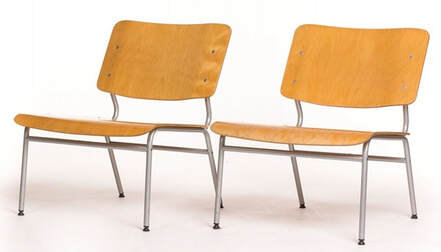 1970s Plywood & Metal Lounge Chairs 1970s Plywood & Metal Lounge Chairs New York - For years, either fairly or unfairly, Ikea has been the butt of many a jokes from those in the world of the decorative arts - especially from those in the antique and vintage business. Comments ranging from flat-pack junk to disposable-décor have been common motifs promoted by dealers and collectors alike, often in an attempt to differentiate their own seemingly 'professionally-curated' vintage inventory from that of the Swedish conglomerates catalog of mass produced items. However, in some respects the distaste for the highly profitable Nordic retailer has gone beyond just general dislike, and has instead crossed over into a special kind of disdain that other corporate furniture retailers have often been spared from. While many would argue that giants like Ashely Home Store Furniture, Crate & Barrel, Pottery Barn, and even the faltering Pier 1 Imports have all been subject to some form of ridicule over the years, it hasn't gone unnoticed that there appears to be a particularly strong and directed feeling of condescension from decorative arts enthusiasts when it comes to Ikea's standing in the world of home décor. 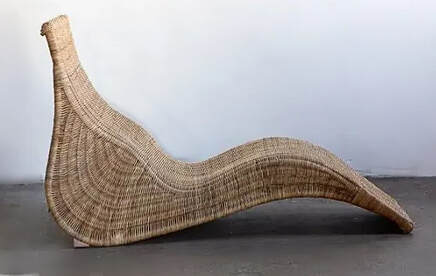 Ikea Chaise Lounge Chair. 3K to 4K At Auction Ikea Chaise Lounge Chair. 3K to 4K At Auction For many though, including Jeffery Blumefeld, a vintage enthusiast, who owns and represents a group of resale shops throughout New Jersey, this is not only an outdated notion, but one that's well past its prime. "We've been selling vintage 80s Ikea for about fifteen years now," says Blumefeld. "We started off with just a few items like some of their early Skojig Mushroom and Fackla lamps, but recently it's exploded across all design facets, including furniture and outdoor items like wicker chaise lounges, some of which we're now selling for well into the thousands," he says. According to Blumefeld, sales have been so strong is this area that he recently converted one of his stores almost entirely into what he refers to as a 'retro-Ikea' space. "We got in on it early, and that helped" he says, "but if you look at a lot of the Ikea stuff from the 80's and 90s, it's held up surprisingly well over the years." Blumefled believes that solid construction techniques and designs, along with nostalgic buyers from the era are likely responsible for creating the surging market, and while he acknowledges that there's always been collectors out there for Ikea goods (it even has its own museum), he's not really sure yet about its long-term viability "I can't really say if the trend is going to go beyond the hard-core clients to a broader buying base, but if price is any indicator of growing popularity, then there's likely some good growth potential to come." 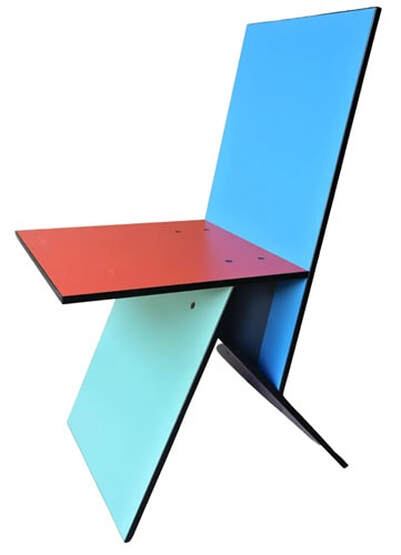 Collectible Vilbert Chairs Collectible Vilbert Chairs Charles Hanley, who works as a decorative arts aggregator for completed auction sales, says that what's funny about the whole 'upturned-nose' towards Ikea pieces from the late twentieth century, is that most people don't realize just how big of an effect the company had on some of the major design trends from that time. While humble in origin, Hanley says products like the Billy & Tema Bookshelves from the 1950s, designed by Ikea company-man Gillis Lundgren, were standout items that had a lasting effect years later on pieces created in the 1970s. In addition to this, Hanley says that Ikea was also responsible for hiring some of the top designers towards the end of the century, including the famous Danish artist and designer Verner Panton, whose iconic Vilbert chairs that sold poorly in the 90's for less than a hundred dollars a piece, but which are now considered collectors items, easily bringing in over $3,000 a pair at auction. Going to sites such as Barnebys.com shows just how much prices have climbed recently says Hanley. "There are 70s-era Amiralen armchairs selling for well over a $1,000 each," he notes, "and some early examples of the Billy & Tema Bookshelves hammering-out for upwards of four-grand - that's starting to rival some Mid-Century prices," he says. Beyond that, Hanley thinks that the junky flat-pack moniker is simply undeserved. "Ikea created well designed furniture at an affordable price," he says, "it's just that you had to put the pieces together yourself." 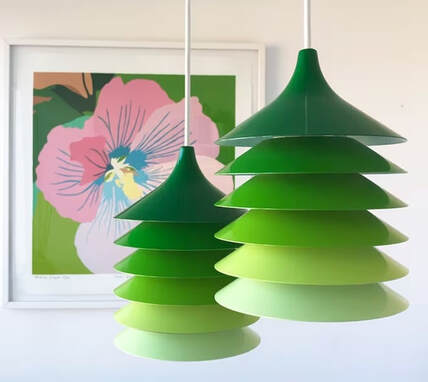 1970s Duett Hanging Lamps $300 1970s Duett Hanging Lamps $300 For those dealers who managed to get ahead of the curve and bought stock and inventory early, the rewards have been plentiful. Alison Hardy, who curates most of her Ikea pieces on 1stDibs, says that knowing what to buy has been key to her success. "Not all Ikea pieces are collectible," says Hardy. "You have to do your research and sometimes it's just a gut feeling that you're buying something that will accrue in popularity and value a little later on down the road." Hardy cites her recent sale of Vilbert chairs which she bought years ago for less then they retailed new. "They just weren't that popular back then," she says, "but over time I suspected they might become a bit of a classic." Hardy says she literally stumbled across six at a garage sale and bought them on sight to go with her dinning table. "They just looked cool in my apartment," she said, "and I've always bought what I liked rather than what was popular at the time." Today, Hardy says her sales of Ikea items range from Duett hanging lights and glassware to funky seating pieces like 70s Skopa lounge chairs, which can bring in bids in excess of $1,000. "I really liked a lot of the design elements that Ikea brought to the market when compared to most other manufacturers from that time," she says, "it was just something different and new that most people hadn't seen before." 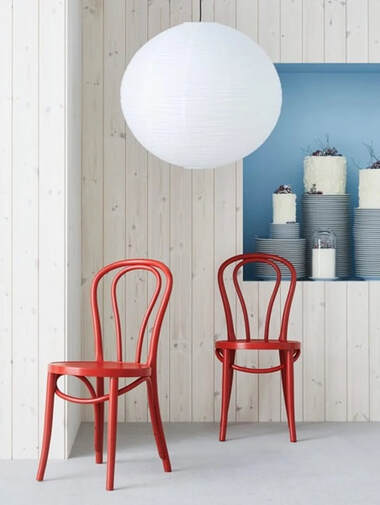 Gratulera - Vintage Ikea Re-Issues Gratulera - Vintage Ikea Re-Issues While design choices are obviously subjective, it would appear that Hardy isn't alone in her 'like of Ikea,' at least according to the editorial director of 1stDibs marketplace, Anthony Barzilay Freund, who was quoted as saying in an interview with the Financial Times that, "Over the last three years prices for Ikea collectibles had increased by more than fifty-percent." Brazilay went on to add that the average listing price of vintage Ikea seating models is now above $3,000. While it's clear that Ikea, and its clearly Scandinavian design may not be fan favorites with absolutely everyone, there can also be no denying its long-term appeal to a broad range of people. Aside from it's purely aesthetic qualities, there's also a certain degree of nostalgia involved when considering it's recent rise in popularity amongst those of a particular age and collecting group. People who grew up in the 1980s have now reached that disposable income stage, and can decorate their homes with items that remind them of their youth. In fact, the growing nostalgia and popularity for all things Ikea has also not gone unnoticed by the company itself. In recent years, they have reintroduced a few classic pieces from the 70s, such as the Gratulera collection (items from the 50s and 60s), as a celebration of the company's heritage. This move has further fueled interest in vintage Ikea pieces, with many looking to add some of the 'reissued' retro flair to their collections. However, it's not just the designs themselves that make Ikea pieces collectible, but also the stories behind them. The fact that Ikea pioneered a new approach to furniture production makes the company and its furniture designs historically significant and relevant. Marketplace enthusiasts appreciate this kind of context - especially when these pieces can tell a story to not only collectors and dealers, but to their customers as well. - AIA Staff Writers  NOTE: For readers seeking more information about the Asheford Institute Of Antiques distance-learning program on professional-level appraising, the study of antiques, collectibles, vintage and mid-century modern items, please click here to visit the school's Home Page. Should you have additional questions about the Asheford program, you can also write to the school at: [email protected] or call the Registrar's Office toll-free at: 1-877-444-4508. WARM AND FUZZY SETS THE STAGE, BUT MODERN ISN'T DONE QUITE YET 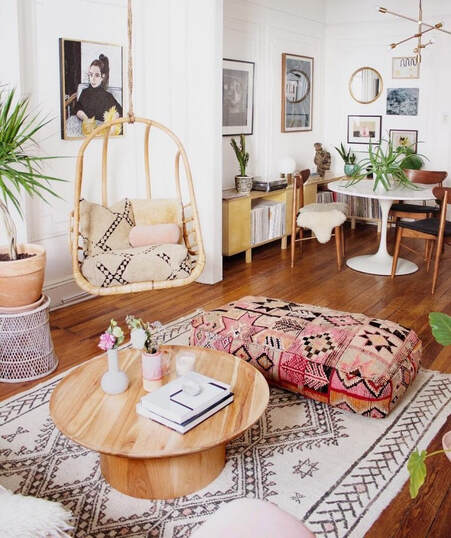 Boho Thrives Boho Thrives New York - Ushering in the new year for many in the antique and vintage business often brings thoughts of “what’s going to be hot,” and “what’s not,” for the upcoming selling season. Contemplating adding newfound pizzazz to your concern with a host of overflowing boho-themed inventory should probably be tempered before stacking one’s store to the rafters with the latest perceived trends. But how exactly does one draw the line between what’s actually hot, and what’s merely pretending to be? How do dealers and collectors suss out what’s truly in demand, versus what’s simply demanding attention. With these thoughts in mind, school staff and writers went back to some of the designers and industry professionals we spoke to last year to see how their prognostications for future trends held up, and where they think the decorative arts are heading for the rest of 2023. While we probably shouldn’t over indulge in boho, there’s no question this style has some serious traction, says Tracy Shea, who we spoke to last year about sourcing out what the younger generation wants when it comes to decorating. Shea who operates a number of vintage themed booths along the west coast, and a storefront operation in San Francisco, says that more than ever, young people are making environmentally based decorating decisions, and that it's changing the nature of her business. "It’s not just that they want something sustainable," says Shea, "but also things that have a sense of history and quality to them which are going to last.” Buying up early stock of boho themed items like 1960s and 70s rattan, carved wood dressers, hanging chairs, and upholstered furniture with flowered motifs have all been big sellers she says. “Younger buyers are continuing the re-use and up-cycle trend, so for the time being, I don’t really see any end in sight to warmer tones, natural wood, and a lot of the colorful floral-print type fabrics,” she says. 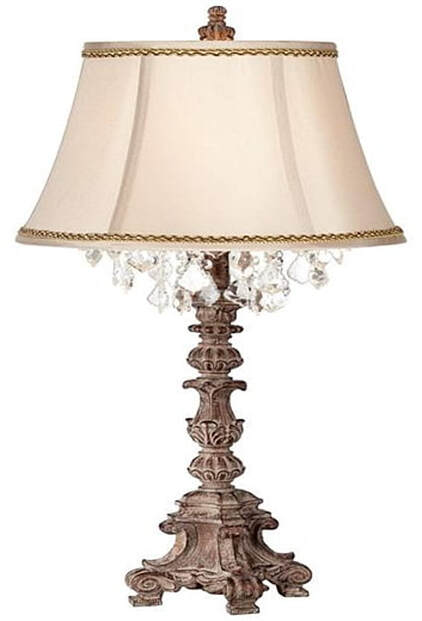 Victorian Style Lamps Victorian Style Lamps For international fine arts dealer and interior designer, Tamara Holt, many of her predictions from last year have also borne fruit. Holt, who credits much of her buying success to keeping a careful eye on what the younger generation is purchasing, says that over the last twelve months she’s seen a reinforcement of trend movements from the same group of buyers. "Young people are definitely where it’s at," she noted, "and are continuing to buy heavily influenced Victorian style upholstered chairs and sofas, French country tables, lamps, and even a few ornate pieces." Holt acknowledges that while most of her first-hand experience is based on attending antique and vintage fairs in Europe, where half of her business is conducted, she still feels that it's translatable to east coast trends in the US. Holt says that while the majority of her design clients frequenting her New York studio were requesting the farm-house gray look just a few years ago, that’s changed. “Even the older generation of buyers I’m getting now seem to be returning to more earth friendly tones, and natural woods as a choice for furniture decoration,” she says. ”It may not be a bona-fida trend everywhere just yet, but I think we’ve just about rounded the modernist corner.” 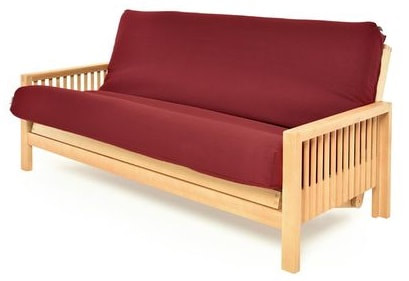 Collectible Ikea? Collectible Ikea? While almost all industry insiders are likely to agree that vintage furniture and going-green will continue to be one of the most popular decorative arts trends for the foreseeable future, it’s not just going to be about full-on boho, or floral-prints and the cluttered style, says Tom Rogers, whose Portland based Scandinavian retro-store lies in stark contrast to those proponing the return to a Neo-Victorian (slash) Boho-Revival look. When contacted last year, Rogers recounted how sales of his Mid-century modern (MCM) inventory had plateaued for the first time in almost twenty years. “It was a bit of an eye-opener,” says Rogers, “but we managed to counter with the other half of our inventory, which was based on simple Scandinavian themed pieces from the seventies and eighties.” Rogers feels that some styles and trends are still geographically based. “Winters in Portland can be a bit drab and gray,” he says, “but much of the Nordic design motif is meant to counteract this with light woods, such as spruce and pine, and splashes of bright color.” When the MCM revival first came along, Rogers says they tipped their inventory in favor of the mid-century trend, but that recently they’ve swung back to what’s always worked in the past. “I think there will always be a modernist design element that remains popular with collectors and buyers,” he claims, “but especially so for clean lines that aren’t necessarily overly futuristic, but that are simple and practical enough to convey a slightly modern message, while still emanating a warm and cozy feel. Rogers says items like slatted pine eighties-style futon sofas, three-legged coffee tables, stools, and wood wrapped low-slung beds are all moving extremely well across virtually every age group and demographic. “It’s hard to believe,” says Rogers, “but some of our best selling items of the past year have been vintage Ikea pieces.” 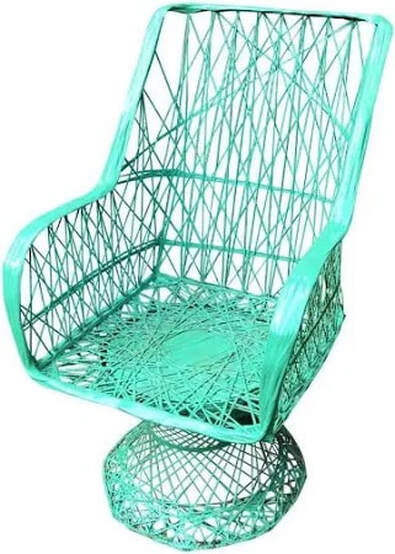 1970s Garden Furniture 1970s Garden Furniture When we last spoke to Tom Wheeler, who specializes in outdoor wrought iron and vintage garden furniture from his shop on a coastal tourist route in Prince Edward County, Ontario, he'd noticed a small drop in interest related to modern-metal themed pieces, and an uptick in requests for rattan, wicker, and old wrought iron items. Eighteen months on, and Wheeler says that there's been a dramatic shift away from the vintage style metal chairs of the fifties and early sixties, to a more traditional look of the heavy wrought iron and wicker again. "People are still buying outside plastic rattan and wicker sofa sets from Home Depot and Lowes," he says, "but the shift away from the MCM feel has been even more palatable." Wheeler says that the faux wicker craze currently in vogue, has also fueled interest again in other retro wicker pieces from the 1970s and 80s. "Last year, I started to pull some of my old wicker out to get a feeling for how it might sell," he says, "and before the end of summer I was cleaned out." Wheeler thinks that it's likely the rage for fifties style metal tulip garden chairs has probably run it's course. "Two years ago I couldn't keep tulips in stock - now they're probably half the value of an authentic wicker example." 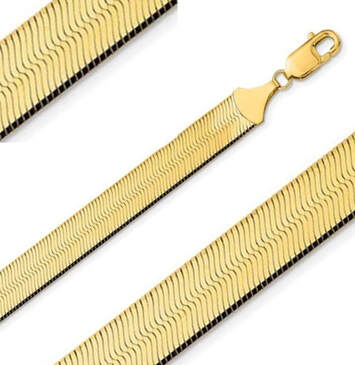 1990s Herringbone Chains Are Back 1990s Herringbone Chains Are Back Janet Headley, who runs an antique and vintage jewelry store in Los Angeles, says that even she's begun to notice a strong shift away from the purely MCM aesthetic, which she feels has been so dominant over the last decade. "Five years ago, that's pretty much all I was hunting down at estate and garage sales," she notes, "but over the last little while, vintage-ey, and what my younger clients call the Y2K style, have popped." Headley says that late 90s, to the early ought's style of gold Omega and Herringbone chains are all the rage again, as are 80s and 90s Italian influenced Bulgari-like pieces that she simply can't get enough of... "I used to find box-lots of this stuff just a couple years ago, but today, it's being scooped up by kids thrifting garage and estate sales faster than I can attend them." Headley says that 'recent' vintage is definitely the craze right now. Almost all of the dealers we spoke to agreed (to a greater or lesser extent), that the clock had probably turned for the modern motif. Not left the building, but merely dropped a position or two in the overall popularity contest for decorative arts supremacy. For many of the dealers, their assessments of how market winds were in the process of changing, also proved to be remarkably accurate. Of course, caressing the crystal ball always comes with risks, but if one were able to look down at some of today's top antique and vintage shows from on high, there's a good chance, at least according to some of these dealers, that you might just find a trending sea of brown begining to form below. - A.I.A. Staff Writers  NOTE: For readers seeking more information about the Asheford Institute Of Antiques distance-learning program on professional-level appraising, the study of antiques, collectibles, vintage and mid-century modern items, please click here to visit the school's Home Page. Should you have additional questions about the Asheford program, you can also write to the school at: [email protected] or call the Registrar's Office toll-free at: 1-877-444-4508. Inflation Is Rising But You Wouldn't Know It According To Most Auction Houses 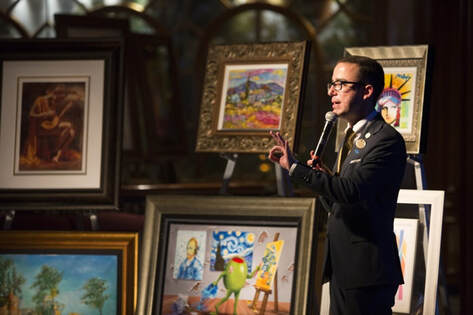 Substantial Gains In Sales Of Art & Antiques Substantial Gains In Sales Of Art & Antiques New York - It's probably not that much of a surprise to many of the industry's heavy-hitters, but for those working in the day-to-day milieu of the more pedestrian aspect of the decorative arts world (the rest of us), the news of just how far and high some of last year's auction sales figures have risen, is likely to be nothing short of stunning - especially when one considers the overall state of the antique and decorative arts market just a few short years ago. For top auction house players like Sotheby's and Christie's, the numbers were impressive. Christie's tallied up $7.2 billion in auctions, and recorded another $1.2 billion in private sales, easily outperforming its sales figures of $7.1 billion it made in 2021. Of that total, just under a billion was derived from the sale of antiques and collectibles. "In 2022, despite a challenging macro-environment, Christie's has achieved our highest ever global sales," chief executive officer Guillaume Cerutti said, referring to post-pandemic economic challenges brought about by inflation and the global strife in eastern Europe. According to Christie's, buyers from North and South America accounted for the lion's share of total sales, with Asian buyers on the decline. However, what was most startling to some was the fact that the auction house said its banner year was fueled not by its trusted client-based list, but by a "new generation of collectors" - thirty-five percent who were first-time clients, and who also happened to qualify as millennials. 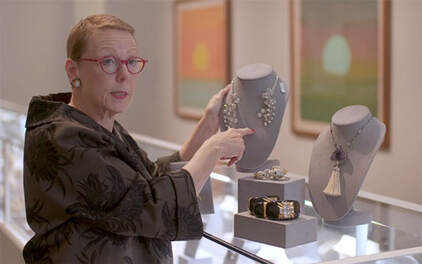 Sales Rise From Jewelry To Gas Signs Sales Rise From Jewelry To Gas Signs Pete Benning, an auction-watch analyst, who tracks more mainstream sales results for some of the larger auction houses, says that it's not just the big-players who are witnessing the entry into today's market by millennials. "It's everywhere," says Benning. "Younger collectors are really starting to take over the mantle left by boomers and are driving up prices across the board." According to Benning, aggregated sales results from almost all the major online auction sites (and smaller ones too), have shown steep increases in overall sales figures over the past year. "It's been a banner year for just about everyone," he said. Benning's research also indicated that while major art sales led the way to soaring profits, sales of high-end antiques and collectibles weren't far behind. Not to be outdone, Sotheby's also posted some chart-topping numbers with an estimated haul of just over $8 billion in combined art, land, and decorative art sales, with a substantial increase in tallies related to the sale of rare antique and vintage collector cars. While some of Sotheby's numbers were down in a few sectors, others rose, especially it's online auction sales of antiques and collectibles, which continued to post double-digit market gains. As with Christie's, the new younger collector has now also become a staple at Sotheby's, with most of its expanding client base over the last year coming from younger buyers in Asia. Bonham's auction house, though not as large as either Christie's or Sotheby's, took several steps this year towards changing that scenario through its acquisition of both New England-based Skinner and Copenhagen’s Bruun Rasmussen within a two-week period. The auction house buyouts are part of Bonham's broader strategy to expand its online presence and to re-connect to European markets after Brexit. Many who work within the company say the auction house has also seen strong sales results over the past twelve-months, especially in areas related to Chinese antiques, which is helping to propel its international growth strategy forward. However, it's not just larger global auction properties that are experiencing the jump in sales numbers, even smaller niche auction houses seem to be getting in on the record setting prices. Richmond Auctions out of Greenville, South Carolina, recently set a new world record this past September for the most expensive antique advertising sign sold at auction - a forty-eight inch double-sided porcelain Musgo Gasoline sign. The selling price of $1.5 million (including buyer's premium) shattered the previous record of $400,000, and proved to be the most profitable sale ever for the fledging auction house that had its first sale in 2020. Heritage Auctions out of Dallas, Texas, also hit new highs with its sale celebrating Abraham Lincoln’s 213th birthday. The two-day event drew a large crowd and brought in $4.3 million while setting a new world record for Americana sales at the auction house. For Pete Benning, results like this are simply further proof of just how far the antique and decorative arts markets have come over the past few years. Benning says that while online auction sales steadily up-ticked throughout Covids heyday, it wasn't until after the pandemic "officially" ended that the numbers for realized auction prices really started to escalate. "People were buying at online auctions during Covid, no question," says Benning, "but once everything dropped and we went back to normal, they exploded - not just at the larger auction houses - but on the smaller selling platforms too." Benning says he doesn't see much changing in the near future despite inflationary pressures and interest rate hikes, and says that if anything can curb the prodigious spending currently occurring at these auctions, he hasn't seen it yet. - AIA Staff Writers  NOTE: For readers seeking more information about the Asheford Institute Of Antiques distance-learning program on professional-level appraising, the study of antiques, collectibles, vintage and mid-century modern items, please click here to visit the school's Home Page. Should you have additional questions about the Asheford program, you can also write to the school at: info@asheford.com or call the Registrar's Office toll-free at: 1-877-444-4508.  A New Way Of Getting Business Done? A New Way Of Getting Business Done? New York - As today's digital warriors of the decorative arts update their monikers from being influential, to the more current influencer, it would seem that no descriptor with this amount of clout has undergone a more profound change in context and application over the last few years. Online platforms brim with those claiming to be 'influencers of style,' or having the capacity to effect 'the character, development, or behavior of specific trends.' But do they? Is this new generation of tech-savvy influencers actually transforming the antique and vintage market in a way that hasn't been seen before, or is this just the rehashing of an old familiar story? For many, the answer may simply lie in the uptick of numbers. As the recent worldwide pandemic revealed, people headed indoors for two years and started looking for something to do - including, creating new online profiles - with some estimating a thousand-fold increase in accounts related to the resale trade alone. For Instagram, this amounted to a whole new development of community based platforms predicated on interests like antiques and vintage goods. Major auction houses began to utilize Instagram 'stories' as a means of promotion through the creation of digital galleries. For other relative new-comers like TIk-Tok, the effects were even more pronounced, as hashtags like #antiques and #antiqustorefinds drew in over a hundred million views with dealers and collectors sharing video expertise of how to buy and sell. The Art Basel survey of "Global Collecting For 2022," also estimated that purchases of antiques and collectibles online accounted for over twenty-percent of total decorative arts sales - an increase of almost double since 2019. As online platforms grew, they also become more targeted in their approach with directed social media content and online viewing rooms becoming common selling tools that not only increased sales, but also brought in a new generation of young collectors to the market. While most dealers have welcomed the arrival of these new antique and vintage collectors, their initial reasoning for entering into the market in the first place appears to have been based on a somewhat altruistic desire to help support the artistic community; at least according to a 2022 Hiscox Online Trade Report, that found almost seventy-five percent of collectors under thirty-five wanted to assist artists and resellers who were part of the social upcycling and reuse movement. Eve Oliver, a top marketing representative for major antique fairs across the UK and Europe, says that young people simply want to buy furniture they won’t throw away tomorrow. "For nine out of ten younger customers that I’ve spoken to, the biggest drive is the environmental factor,” she says. Tom Holland, who's also a marketer, but who works with antique shows on this side of the pond, says that a number of older dealers have quietly acquiesced recently to the fact that using the latest Instagram presentation techniques and conducting business directly through DM's (Direct Messaging), has become a necessity, not an option. "If you want to attract the youthful buyers," says Holland, "you need to be playing their game with one click buys and offering creative ways of paying." 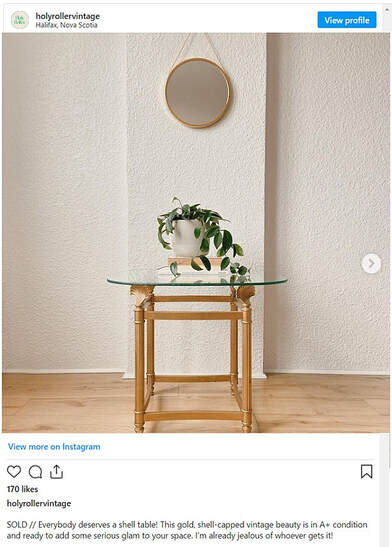 Presentation Can Make The Difference Presentation Can Make The Difference Former marketing analyst at Meta (Facebook/Instagram), John Chapman, who now runs his own decorative arts consulting and ad-placement firm for online entrepreneurs, says there's been a massive change in how people are conducting business today. Chapman says that during the pandemic he noticed younger profiles and accounts coming online that were specifically geared towards the antique and vintage industry. "It was something to do," he says, "they were locked in, but could buy and sell vintage and second-hand items while sitting behind their desk from home." This became transformational says Chapman, because as time progressed, these accounts became larger and more sophisticated in their appearance and in their approach to selling. Chapman says that before he left Meta for his own start-up, some of the biggest account growth he witnessed came from within the decorative arts community. "Some of these young vintage sellers really started to attract a following," he says, "I was literally stunned at how they had morphed from selling items on the kitchen counter, to complete professional grade photographic set-ups with tens-of-thousands of followers." In his current role, Chapman says he sees antique and vintage Insta-accounts all the time that have massive followings. "It's not just a few big names," says Chapman, "it's across-the-board interest by a huge number of people." Bridget Van Wart is a perfect example of what Chapman is talking about. In less than three years, her Halifax based vintage-themed Instagram account has gone from zero to over fifteen-thousand followers. "It's just blossomed into this community," says Van Wart. Using her own apartment as a backdrop, Van Wart has managed to refine the process of selling her vintage housewares by concentrating on presentation, and using her own décor to tastefully accentuate the items she's marketing. While she acknowledges that it's still "selling," Van Wart says that venues like Instagram provide her with the ability to be creative about the process. "The visual aspect of it is huge," says Van Wart. Other popular antique influencers such as the UK's, Jack Laver Brister (@tradchap), have also figured out that creative designs and helping people to envision those items within a home atmosphere are not just good for sales, but for brand exposure too. With over sixty-two thousand followers, Brister has become a prime influencer in one of the most competitive antique and decorative arts markets in the world. For many who do attain influencer status within the industry, it usually never comes about as a stand-alone effort. At least according to Tina Humphries, who's company specifically promotes growth-and-development strategies for accounts on sites like Instagram, Etsy and Tik-Tok. Humphries believes that popular success comes down to a lot of networking which helps spread the word. In her considerable experience, many of the younger players she's seen come to her with dreams of expanding their reach have already done a lot of the important work - namely - they've managed to get others to promote them by sharing. Humphries remembers one dealer in particular who came to her with a list of interior design influencers that supported her client by sharing the purchases they made with their followers. "Her growth was literally exponential," says Humphries, "in the end, there wasn't much for me to do since she'd already figured out that one of the biggest secrets to sustained online growth and influence was simply to get everyone else to act as an influencer for you." Humphries, who's company straddles the world of online promotion and the decorative arts, believes it's not really a question of whether or not these young upstarts are having any influence in the antique and vintage world, but more so a question of how much influence. "All I can do is look back at my own generation," she says with a smile, "when I was young, Martha Stewart was everywhere." - A.I.A. Staff Writers  NOTE: For readers seeking more information about the Asheford Institute Of Antiques distance-learning program on professional-level appraising, the study of antiques, collectibles, vintage and mid-century modern items, please click here to visit the school's Home Page. Should you have additional questions about the Asheford program, you can also write to the school at: info@asheford.com or call the Registrar's Office toll-free at: 1-877-444-4508. 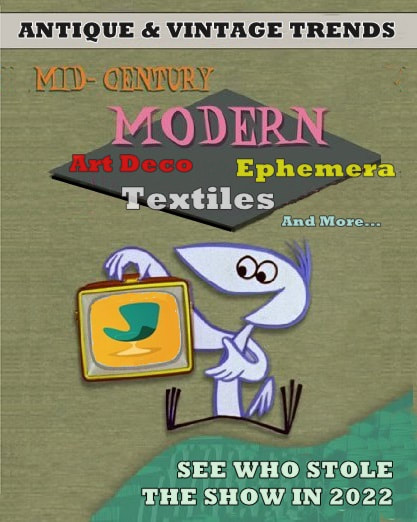 New York - For industry insiders, the wait is finally over. Now in its fourteenth year, the Asheford Institute's annual survey of top decorative arts buying trends from the past twelve months has just made its way onto both digital and paper newsstands across the country. The international survey/poll of past students and graduates from the Institute has become a staple to many in the antique and vintage industry for its unique ability to look into the current state of today's decorative arts marketplace, as it relates to overall sales trends for dealers working within the collecting community. Anthony Harper, the school's lead researcher, says the key to getting meaningful survey results that businesses and people can actually use to help plan their inventory buying strategies for the upcoming year is based on receiving actual sales data, alongside item-specific requests from buyers, which can then be used to indicate interest within a particular collecting genre. (*Note: The link to the "complete survey listings" can be found at the end of this article) As with virtually all business this past year, Harper says ongoing supply-chain issues continued to have an effect on almost every segment of the economy - including certain genres within the decorative arts field. "In 2021 we were all still recovering from Covid, but this past year, buyers, dealers, and collectors were out en masse, in-person, and were literally snapping up everything in sight." Harper says that by the end of summer many dealers were complaining about a lack of available and affordable inventory. "It wasn't just one category of collectible," says Harper, "it was virtually anything, from folk art to baseball cards." Similar tales have surfaced in previous years, but Harper says those scenarios were not even close to the severe shortage of available stock that many antique and vintage dealers faced in 2022. Harper believes that some collecting categories in this years poll may have risen or fallen not necessarily because of a lack of popularity, but because of a lack of stable inventory. However, he does acknowledge one upside to all the market uncertainty - for most dealers, sale prices rose sharply. For Amber Shole, who's been compiling survey statistics for over eleven years now, the most striking change in poll results this year was also related to price. "Item listing values skyrocketed in virtually every area," she said, "and dealers took advantage by holding firm on prices." Fan favorites like Art Deco and Textiles continued to boom says Shole, while other perennial favorites such as Mid-century modern began to show signs of weakening. "There's definitely a shift," she says, "it's just a matter of being able to pick up on those markers before they become full-fledge trends." In other areas of the survey there were also some pleasant surprises, as once again an unexpected (but familiar) era of collecting shot back up the charts to a respectable placement for the first time in over twenty-five years. The cause? Well, according to Shole, it's all about a younger generation that's turned frugal-collector. "Young people are looking for inexpensive eco-friendly choices and sustainability," says Shole, "and the antique and vintage market is giving them that." Shole believes that the creation of new trends in the decorative arts market is more of a symbiotic relationship than anything else. "Millennials and Gen-Zer's need something, and we're able to supply it to them," she says, "and it's that practical aspect that's driving the creation of some of these new trends." For readers seeking the complete 2022 listing of all the best-selling antique and vintage genres and categories contained within the school's yearly poll and survey, you can find the full results (including this year's winner), by simply clicking on the link below... Link To 2022 Survey/Poll: **TOP SELLING ANTIQUE & VINTAGE CATEGORIES FOR 2022**  Emily Watkins is a freelance decorative arts writer, and an honors graduate of the Institute. She splits her time between New York and London as a contributing columnist to all things MCM and is also a recognized specialist in the field of Asian & European ceramics.  NOTE: For readers seeking more information about the Asheford Institute Of Antiques distance-learning program on professional-level appraising, the study of antiques, collectibles, vintage and mid-century modern items, please click here to visit the school's Home Page. Should you have additional questions about the Asheford program, you can also write to the school at: info@asheford.com or call the Registrar's Office toll-free at: 1-877-444-4508. 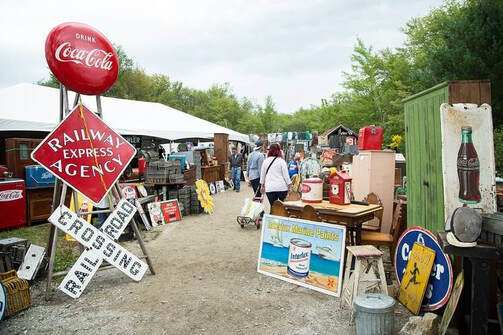 Dealers Report Strong In-Person Sales Dealers Report Strong In-Person Sales New York - A number of years ago, a somewhat famous antique dealer in New England once remarked that he had a much better chance of selling his high-end Georgian furniture at flea markets than he did online. While this may have been an exaggeration to some degree, and times have certainly changed since then, it still makes the point that what sells in the decorative arts market can often be determined not only by what's currently trending as popular, but also by the location or venue from where it's being sold. In theory, the Internet should have leveled this playing field long ago, but ask virtually any antique dealer with a couple of decades under their belt, and they'll tell you that by evening-up the playing process, the Internet also ironed-out some of the competitive wrinkles and strategies often only found in real-world markets. Sure, one can have a better website, a larger digital marketing budget, and perhaps greater online technical proficiency as to how things work, but in the end, online sales and corresponding e-storefronts on behemoth websites like Etsy, 1stdibs, and Ruby Lane, all tend to have a sameness about them that can make it hard for dealers and vendors to truly establish and differentiate themselves competitively from one another. This isn't to say that online retail outlets don't work, or don't provide their clients with options for distinguishing their businesses from each other, but only that in the past few years many antique and vintage dealers appear to be returning to a tried-and-true method for successful entrepreneurship that allows them a greater degree of competitive experimentation, and which is based on an in-person experience. 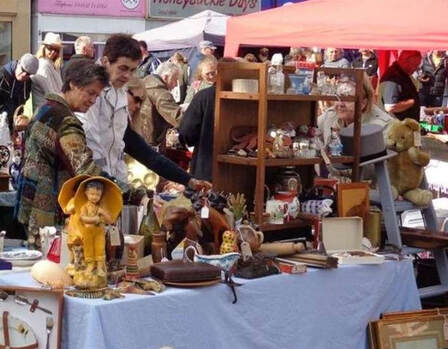 Shoppers Are Returning To Touch & Buy Purchases Shoppers Are Returning To Touch & Buy Purchases For Jeff Howard, who runs an estate sale business and mid-twentieth century themed vintage goods store in Southern California, the decision to pop-a-table and tent and return to meet-and-greet sales was one borne out of necessity rather than anything else. "I've bought and sold plenty of things online," says Howard, "but recently I decided to return to where I first started, after noticing a flatline in some of my online sales." Howard says he set-up a weekend booth at one of the state's largest flea markets where he used to vend prior to his current bricks-and-clicks business. "It's been great," he says, "the crowds are back, and I'm able to bring specific stock from my store like metal signs and automobilia that I know will sell in my booth." Howard believes he's able to get far more eyes-on his inventory at the flea market than in his store due to its location, and the fact that the people walking by are mostly committed buyers. "I have to pay for space," he says, "but even with that, my total weekend sales are up by about 200% over normal." For others in the industry, it's the "committed" sentiment expressed by Howard that seems to resonate the most. Stan Darling, who's taken over the family run auctioneering and antique business in Texas, says he thinks people might have a bit of Internet fatigue after the pandemic and are simply hankering to get out. "Our in-person sales have been fantastic this year," says Darling. "We're exceeding our pre-pandemic levels by a long-shot, and the people attending the auction sales tend to be buyers, not looky-loos." Darling says that while they've had the digital live-bid option for a number of years at most of his sales, what he's really noticed recently is the uptick in people wanting to get the hands-on experience before they purchase. "I've also got other antique dealers from around the area who are coming to me with their inventory," says Darling, "just so they can add it to one of our sales." Hector Diaz, a local dealer from Galveston, who uses Darling's company, says he's almost getting retail-prices at auction for the furniture he's trucking in from his storage site, which he normally uses as a base for his online shipping and distribution. "Five years ago - no way," says Diaz, "but today I'm moving more case pieces and heavy Victorian stock at a better overall price than I've ever done before." Most dealers are quick to point out that while the hybrid online/offline version definitely still works, it's become increasingly clear that the public's interest in attending live sales events has spiked dramatically over the past year. "I just think the whole Covid thing re-set a lot of peoples priorities," says Shelly Hoffman, who manages a large antique and vintage mall on the outskirts of Kansas City. "It's crazy that we were locked down only a a year or two ago, and now we're literally having to set counter-limits on the number of people who can enter the mall." According to Hoffman, her booth dealers are also reporting some of their strongest numbers ever, with many admitting that their online sales have been overtaken by customers who arrive on foot. "People are literally getting into bidding wars right in front of vendors booths," explained Hoffman. "I've never seen this kind of frenzied buying before except maybe at online auctions." David Harvey, who's had a booth at the mall for more than ten years, says that in the past there were always spaces opening up with vendors coming and going, but that today the wait-list for a booth can be anywhere from twelve to twenty-four months. "I've had to hire someone to man my space just so I can go and pick inventory," says Harvey. "I'm not complaining, but it can be a bit stressful trying to keep up with the demand sometimes."  More Than Just Food At Farmers Markets More Than Just Food At Farmers Markets Harvey isn't alone in his dilemma, as a group of vintage enthusiasts with shops on Etsy decided to try out their own form of a Farmers (slash Vintage) Market, in one of Ohio's historic eastern towns. Spearheaded by Helen Olsen, the group who all live within a relatively short radius of each other, decided to take their online retail shops into the real world after noticing the success of agricultural vendors at many of their local farmers markets. "We were stunned by the response," said Olsen. "We tried to pick inventory that could be set-up and broken-down quickly, and it literally sold out by days end." Olsen said she and her cohorts have refined the selling process over the last few months by concentrating on offering what's popular online, and then adding those items to their tents on the weekend. "It's been a great success," said Olsen, "we've had tremendous sales this year, and are hoping it continues well into the coming months." Olsen however, did acknowledge that she probably couldn't have managed on her own if it wasn't for her friends and colleagues help. "Without the other girls from our Etsy group scouring the countryside for additional inventory during the week, none of this would have been possible," she said. As for her online sales, Olsen says they're still holding strong and believes they'll continue to do so, but now thinks there's no question that a retail outlet is going to be part of her groups immediate future, especially as the cost of shipping for online sales continues to rise. "We already have someone out looking for space for us," she says, "It's no longer a matter of if we're going to add a full-time face-to-face business, but just a question of when." For many of the older dealers out there, the return to in-person sales is a welcome sight. "Part of the reason I got into this businesses was the social aspect," says Jeff Howard. "I've always enjoyed chatting with, and meeting new people." For Howard and others in the industry, it would appear that it's not just the ethereal concept of fads, trends, and online imagery that's moving the antique and vintage markets forward today, but rather a real-world visceral connection that may finally be returning to the decorative arts landscape after a long and somewhat unprecedented absence.  Emily Watkins is a freelance decorative arts writer, and an honors graduate of the Asheford Institute. She splits her time between New York and London as a contributing columnist to all things MCM and is a recognized specialist in the field of Asian & European ceramics.  NOTE: For readers seeking more information about the Asheford Institute Of Antiques distance-learning program on professional-level appraising, the study of antiques, collectibles, vintage and mid-century modern items, please click here to visit the school's Home Page. Should you have additional questions about the Asheford program, you can also write to the school at: info@asheford.com or call the Registrar's Office toll-free at: 1-877-444-4508. 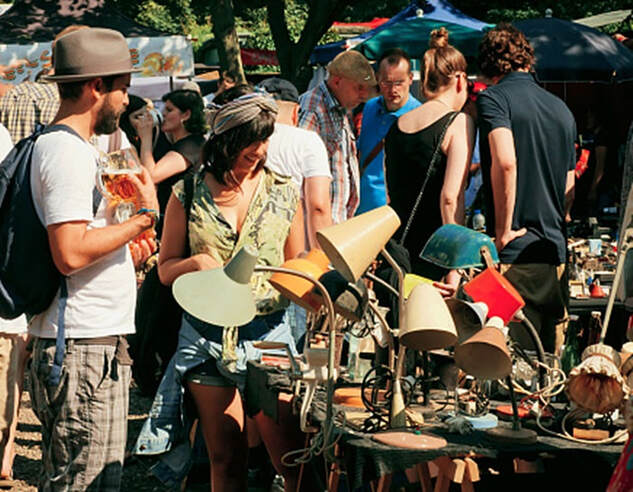 New York - As was noted earlier this year in the most recent Global Home Furnishings report, produced by ResearchandMarkets.com, antique and vintage furniture has officially become the hottest selling trend in today's decorative arts marketplace. While the ride to the summit's top has been great for most of those in the industry, it's also raised a rather important follow-up question related to its current popularity. Namely, has the industry's newfound fame been a result of the public's seemingly sudden interest in second-hand and vintage items, or has a younger generation of style mavens and vintage curators been responsible for putting the antique and vintage scene back on top of the decorative arts podium? For some, it's likely to have been a natural convergence of events, or perhaps even a timely combination of both. However, what many in the antique and vintage community really want to know - beyond just the who or why behind the industry's recent upswing in popularity - is the what. Or more precisely; the type of items dealers and sellers are now looking to purchase when it comes to stocking their businesses with today's latest home décor trends.  1980's Miami Vice Style Returns 1980's Miami Vice Style Returns Carla Leland and her son Trey believe that today's current crop of young dealers have never been more influential when it comes to setting style trends - and she should know - as someone who not only runs a ten-thousand square-foot vintage business along with her tech-savvy son, Carla also keeps her finger on the pulse of en-vogue movements as a managing partner at one of Manhattan's hippest Upper East Side interior design firms. Leland says that curating their businesses based on what they see younger dealers stocking has become almost standard fare. "Last year we started to see a lot of vintage items in the Deco style," she said, "but Trey noticed that it was more of a Miami-based Deco style from the 80s, not the 1930's." Leland says that her son's friends from South Florida had been buying up anything from estate and garage sales that was vintage 1980s (think Sony Crockett and Miami Vice), because of the cool factor. "I really wasn't even aware there was a particularly attributable South-Deco furniture style," she claims, "but Trey had all these modular tables with Art Deco influences that were done in gold and mirrors shipped up to our shop, and we literally sold them out in five days." Leland says that black-lacquer bar and bedroom cabinets from this era have also been big sellers. "I've put my son's friends on retainers - hunt down as many of these cabinets as you can - and I'll pay handsomely," she quipped. As for where most of the pieces are going, Leland acknowledges that the majority are probably headed to condos or modern apartments. "It's definitely a young persons game," she says, "they're buying them, selling them, and in so doing, setting the trend." While the notion of a picker being a moderator of changing tastes and styles may seem like a bit of an incongruity when paired against the accepted image of the shambolic loner hoisting leftovers onto a passed-its-prime truck, nothing could in fact be further from the truth when it comes to today's finders of the past. At least according to Art Hanson, who's ability to see the beautiful (and desirable) from the banal, are all part of what he believes makes his approach to business such a success. "At one point in time, dealers would give pickers a list of what they wanted," says Hanson, "but today, many of the younger pickers like myself are actually helping older dealers by suggesting the inventory they should be stocking, rather than what they want to be stocking." Hanson believes that his travels to literally thousands of shows, fairs, flea markets and estate sales across the country are what make him an excellent arbiter for what's popular, and more importantly, for what's selling. "I've seen first-hand what people are buying," says Hanson, "so finding that common denominator isn't that hard when you see it over and over again." Hanson's knack for understanding what's hot in a current market isn't based on mystique, but practiced experience. "I'm probably that first wheel in the home décor cycle," he says, "I buy what I see selling, and in turn resell that to dealers, who in turn do the same to the public." According to Hanson, Mid-Century still does well at most locations, but he says he's noticed a distinct move towards Boho and softer lines with younger buyers at larger urban events. "They're modded out," he chuckles, "like someone who's sat for too long on one of those uncomfortable MCM sofas." Hanson says he can still find decently priced wicker and rattan pieces, but the tides are beginning to shift. "Two years ago, I could literally pick that stuff for free," he says, "now I'm getting the side-eye from sellers at estate sales who are tweaking to it's growing popularity." 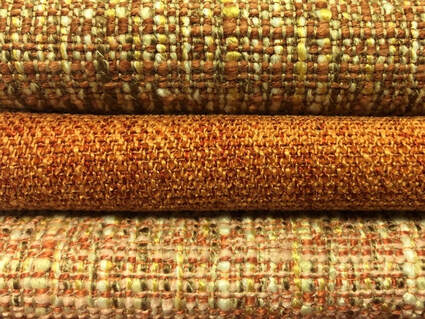 Original Vintage Bolts Of Earthy Fabrics Are Trending Original Vintage Bolts Of Earthy Fabrics Are Trending For the rest of us, it's mostly just a matter of turning online to see what's really hot, and by extension, who's promoting it. Checking the latest posts on DIY blogs and Instagram groups related to the decorative arts, reveals in relatively short order what's selling simply by the number of private DM (Direct Message) requests that will often appear under an item listed for sale. Pam Harris, a twenty-something, who's digital exposure includes, Instagram, Etsy, and a host of other sites, lists herself as a 'vintage influencer,' and a 'purveyor of up-and-coming styles.' Harris says that although she's only been in the business a few years, she thinks she has a pretty good bead on her generations style and the things they want. "I started out buying vintage clothes," she says, "but soon added all sorts of old textiles from the the 60s, 70s and 80s - especially bolts of fabric with crazy design patterns that reflected the decade." Harris says that led to a number of interior designers contacting her about what was selling. "They'd ask all sorts of questions about who was buying what, and how long it had been selling it for," she says. For Harris, it soon became apparent that the information she was giving out freely, could instead be monetized through a number of different online ventures. "After a while, these same people started to not only follow me, but became some of my best customers." Today, Harris says she fields questions about rising trends, and takes orders from all over the world, and has grown to such an extent that she's purchased a small building to store all her vintage materials. "Warm fabrics, oversized floral prints, and dramatic heavy-draped curtain fabric from the 1980s are all making a comeback," she says, "especially with younger clients who are reupholstering chairs and sofas they're often inheriting from parents or relatives." Jason Hodge believes it's more of a symbiotic relationship when it comes to the chicken and egg theory about who's responsible for initiating trends. Hodge, who's been a west-coast dealer for the last twenty years, thinks that it's definitely young people who generally set the trend-table. "When Mid-Century started," says Hodge, "most of my customers were in their mid-thirties. Today, I'm getting kids in their mid-twenties who are coming to me with very specific requests." Hodge also notes that when he used to frequent some of his favorite west coast flea markets (back-in-the-day), the vendors were generally much older than him. Not so today he says. "I'm forty, but most of the kids I see selling and buying to each other now are pretty much the same age." Hodge believes that makes it a bit easier to figure out what to stock up on, since there's a good chance that today's young folks will likely become his long-term customers in the near future. In the past, trends were usually slow to move from flea market popularity to widespread consumer acceptance because of the age disparity that often existed between buyer and seller, but that simply isn't the case anymore says Hodge. "I think there's enough young people now in the business that they're no longer just an anomaly, but have in fact become the new core of today's antique and vintage community. Do I think they're setting today's style trends? I'm not sure," he says, "trendspotting can be a tricky business for any demographic, but I certainly wouldn't bet against them." - A.I.A. Staff Writers  NOTE: For readers seeking more information about the Asheford Institute Of Antiques distance-learning program on professional-level appraising, the study of antiques, collectibles, vintage and mid-century modern items, please click here to visit the school's Home Page. Should you have additional questions about the Asheford program, you can also write to the school at: info@asheford.com or call the Registrar's Office toll-free at: 1-877-444-4508. 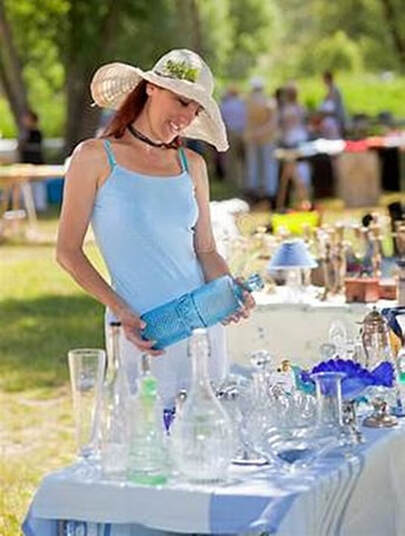 New York - While supply-chain snarls, Amazon delivery delays, and partially empty shelves at big box stores may be today's norm, this certainly isn't the case when it comes to the availability of antique and vintage items. After two years of being inside, along with a restrained pandemic fueled economy that encouraged purchases online rather than face-to-face, the doors have finally opened wide and people are once again outside this summer scouring their local decorative arts markets, antique shops, and vintage fairs in search of their favorite items. Whether you're a collector, a dealer, or just a buyer hoping to score that perfect house-find, hunting through the countryside and nether-regions of the antique and vintage world can sometimes seem like a daunting endeavor - especially when it comes to discerning the true from the fake, the great from the pretenders, and the popular from the passé. As antique and vintage themed décor has soared in popularity recently, finding those top-tier treasures has become more difficult than ever. 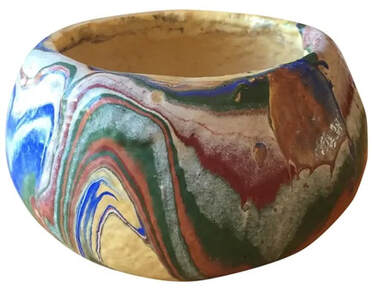 However, with a little help from some of the school's top appraisers and a few industry experts, we've managed to precis down a list of items we think you'll definitely want to be on the lookout for when out treasure-hunting those hot summer finds. Ozark Roadside Tourist Pottery This is hot, very hot right now. Perhaps it's just the summer season, but Ozark Roadside Tourist Pottery is continuing to see a staggering rise in popularity and price. Most commonly found at roadside tourist shops and gas stations throughout the Ozarks and American South in the 1940s, these pieces were made of molded cement pots placed on a potters wheel with a swirl drip glaze and then decorated with oil paint. Availability at "senior" garage and estate sales is still good with prices ranging from $35 to $450. Look for examples from makers like Camark, Niloak and Ouachita pottery. 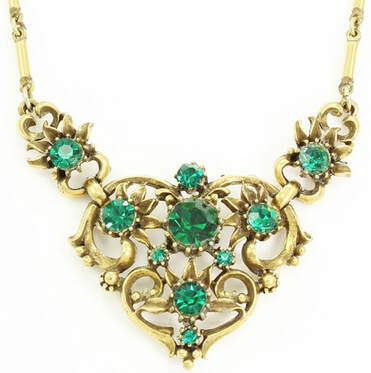 Costume Jewelry As the school's annual survey pointed out earlier this year, there seems to be no end in sight with the public's fascination for this popular collectible. Great deals can still be found in most of the usual haunts (thrifts, second-hand stores, flea-markets, etc.), and jewels don't have to be real. Look for well known makers like Eisenberg, Trifari, Weiss, Sarah Coventry and Hobe - all can command top dollar. A boxlot investment of $20 at an estate sale can easily return $300 to $500 online if you know what you're looking for. 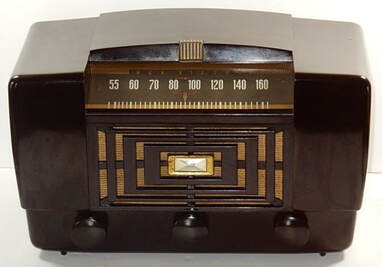 Old Radios - Particularly RCA Victor Models Electronics are currently experiencing a boom in the collectible world as young tech enthusiasts and collectors are now moving beyond vintage game-consoles and into some of the earliest mass produced electrical gear out there. RCA which helped launch mainstream radio, and was considered one of the main pioneers of the industry, became the dominate producer of radios during the 1930s and 40s. Today, these Art Deco-style console and wooden radios, along with post-war Bakelite units, can come with a steep price, providing everything is in working condition. Prices range from $30 for poor non-functioning examples, to over $650 for those in pristine shape, with no chips or cracks and with all "tubes" in full working order. Yard-side road sales and estate sales are probably going to be your best bet during the summer months, as those donated to indoor thrifts and charities will likely be snapped up quickly. 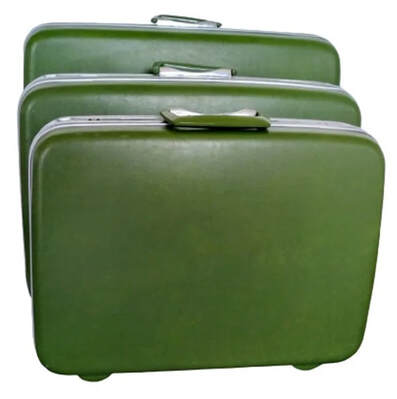 Vintage Luggage As post-pandemic travel ramps up again this summer, so has the public's desire for some cool one-of-a kind vintage luggage. After being shut-in for so long it would seem that the current explosive interest in classic luggage should have been expected - but apparently (much like today's airports) - it wasn't. Dealers report that pre-pandemic examples that lined showroom floors have all but disappeared, and that finding replacement stock is becoming increasingly difficult. Old Pullman cases, American Overnighter's, 1970s and mid-century modern themed cases are all in high-demand with prices rising quickly. Expect to pay more for vintage than new in many instances. As with all practical items, condition is king. Look for original leather straps, perfect linings on the inside, and if it comes with authentic travel stickers, so much the better. Vintage Vuitton and American Oshkosh pieces can bring very, very high prices. Look for accessories too, such as hat boxes. Range: $60 to over $4,000 depending on condition and maker. Again, senior estate sales are likely to reap the most rewards when it comes to sourcing inventory at a reasonable price. 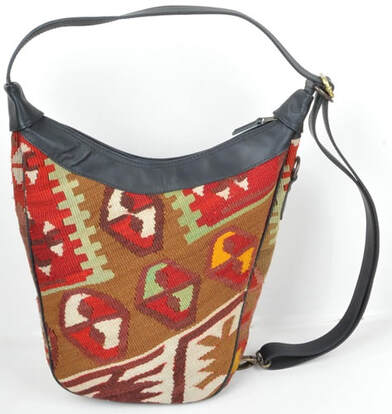 Vintage Clothing & Accessories We probably don't have to say this, but vintage clothing and fashion accessories (think purses), are going to be one of the top summer finds this year (if you can find any!) Garage and estate sales take the first and second spot for sourcing, but second-hand and thrift stores shouldn't be overlooked either (just get there early and try to get wind of the stores weekly or daily "stocking" schedule). Look for vintage Boho sling-style handbags, MCM lucite purses, chainmail style clutches from the twenties and thirties, and anything that comes with bangles. As always, condition is paramount. Buy at $30 and sell online for $450. 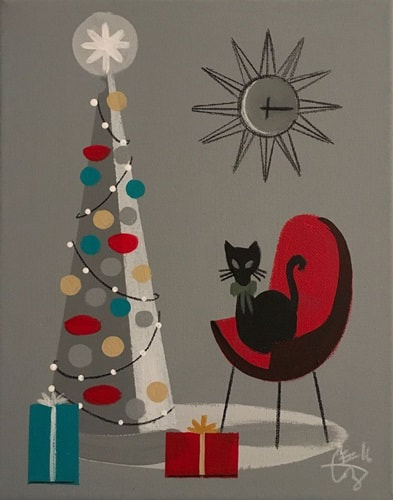 Christmas Memorabilia & Decorations While Christmas might not be on the mind of most at the moment, this is certainly one of the best times of the year for scooping up all those old unused vintage Christmas cards and ornaments from garage and estate sales. Susan Close, one of the longtime appraisers and educators at the Institute, says she's witnessed an incredible spike in value for Christmas cards with specific themes or timelines. An authentic MCM pack of five cards can sell in the range of between $25 to $55 to the right buyer. Classic tree ornaments with motifs that date the item to a specific period can also prove highly desirable just before Christmas. As always, condition speaks volumes. Curled corners, pen marks, along with scuffs and tears will all affect value. While there are many reproductions available, sticking to garage and estate sale finds can often provide buyers with a reasonable expectation of authenticity. 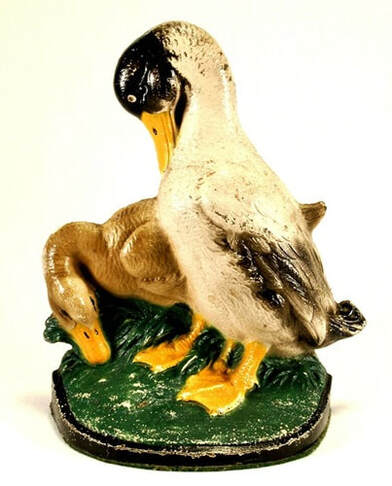 Cast Iron Doorstops Cast from pig and scarp iron poured into a sand mold, authentic doorstops from the turn of the twentieth century have become extremely popular recently - especially those with their original paint. Perhaps the most famous of makers, Hubley Manufacturing Company out of Lancaster, LA are considered by many to be the best of the best. Known for initially making piggy banks and door knockers, the company added hand-painted doorstops to its repertoire in 1909. The doorstops were offered in a wide range of subjects that included flower baskets, depictions of homes, dogs, fictional characters, and exotic animals such as giraffes (one of which sold for almost $11,000). Even modest examples of more common themes with their original paint can still generate substantial sums. Asking prices of $500 to $800 would not be out of the question. Just be sure to look for the three-digit number or the word HUBLEY on the back to ensure authenticity. Other makers include, Bradley & Hubbard, Albany Foundry, and Wilton Products. Reproductions do exist, but the casting process is often more basic, leaving surfaces with more of a sandpaper feel than a smooth surface. 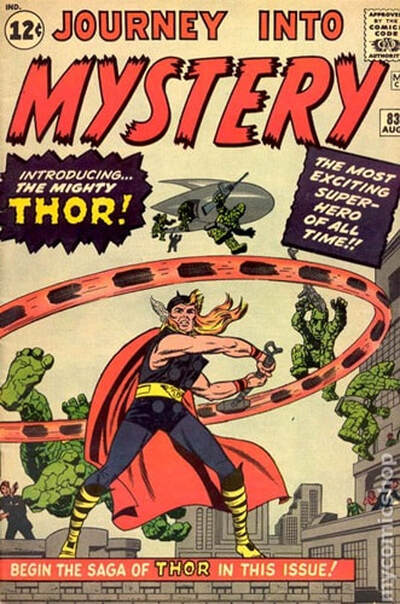 Marvel Comic Books While it's probably obvious to most that comic books have been a hot commodity for years now, what many may not realize is that there is a world-within-a-world when it comes to stratifying their value and popularity. Clearly, a first edition Superman is not likely to come along anytime soon this summer, no matter how many garage sales you attend, however, a more recent first-edition Marvel comic just may. Add to this the overwhelming popularity of the Marvel film universe and franchise and you could be sitting on easy street with the right amount of sleuthing. As baby boomers continue to downsize and relocate, often dumping off unwanted goods and chattels at the driveways edge, finding a first issue, number 1 condition Thor is still a possibility, and could potentially put $10,000 in your pocket. Again, condition is key to realized value, and garage sale clear-outs and boxlot offerings are probably going to give you the best shot at finding that gem-of-a-box hidden somewhere amongst the baby clothes. Normal finds for other titles, and subsequent issues with minimal wear, can still see price mark-ups in the $20 to $200 range. 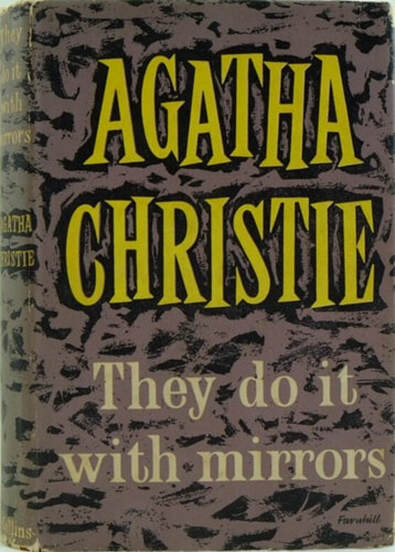 Old Books (First Edition Preferably) Finally, to round out our top nine summer antique and vintage picks not to be missed, we're going to close with an often overlooked collectible that has recently begun to shine again on the heels of the antique and vintage décor comeback. Once the outcast and antitheses of the austere Mid-century modern movement, old books have suddenly resurfaced as one of today's more popular decorating elements, due in large part to the rise of the Bohemian decorative theme. Sources will be plentiful, from garage sales to Goodwill stores, as books have been undervalued and over represented for years now. First editions don't have to be ancient to be valuable. The Agatha Christie novel, They Do It With Mirrors, published in 1952 by Collins in London, is worth approximately $200. Large leather-bound books, regardless of edition, are also gaining value purely as decorative objects. Either way you can't lose with this collectible, as prices are still low, while values are set to rise. Plus, you'll also get something new to read without having to turn anything on...  D. Harman (AIA), is a former Asheford Institute honors graduate and a freelance writer who has a knack for picking trends when it comes to the decorative arts world. When away from his keyboard, Mr. Harman is also a top "picker" for some of New York's finest antique & art establishments.  NOTE: For readers seeking more information about the Asheford Institute Of Antiques distance-learning program on professional-level appraising, the study of antiques, collectibles, vintage and mid-century modern items, please click here to visit the school's Home Page. Should you have additional questions about the Asheford program, you can also write to the school at: [email protected] or call the Registrar's Office toll-free at: 1-877-444-4508. 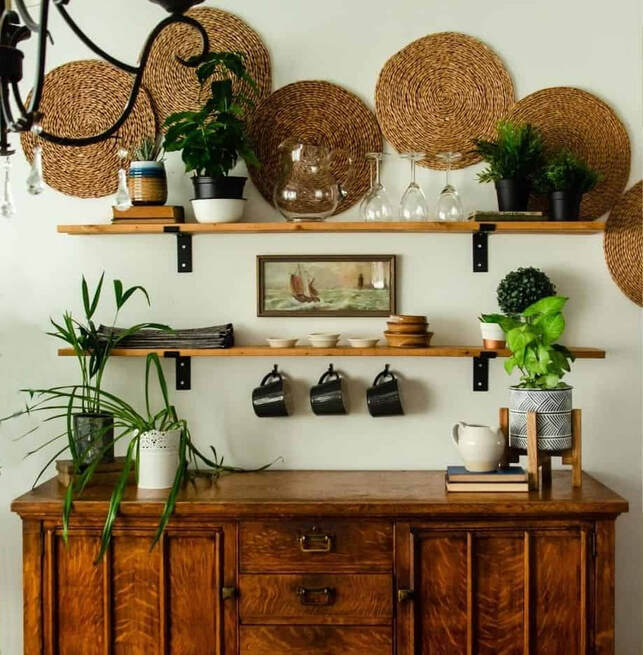 Lots Of Wood Tones & Textiles Lots Of Wood Tones & Textiles New York - There's no question that there's been some rumblings for years from antique and vintage dealers about the quiet rise of the new-bohemian influence within the current decorative arts marketplace. However, for many in the industry this apparent subtle changing of the guard from one style period to another not only makes sense, but in some ways should have been expected. Especially when one considers that the movement from minimalist design to maximalist décor is also representative of the chronological progression from Mid-Century modern to Bohemian chic as it actually occurred during the late 1950's into the swinging 60's. 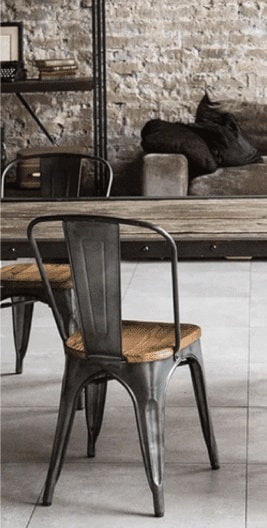 Wood-Toned Industrial Wood-Toned Industrial For the uninitiated, the Bohemian design aesthetic (Boho), represents the virtual polar opposite of the Mid-Century movement. It's all about earthy colors and fabrics, wood tones, old rugs, along with mix-and-match patterns. "It's what I like to call warm and inviting, rather than cold and austere," says dealer Sheila Durst from her downtown New York showroom, which features exclusively handcrafted items from the 1960's and early seventies. Durst says she dabbled in the Mid-century movement when it was hot a few years ago, but always felt more comfortable with warmer tones and hues from the design period that came after it. "I think the world had been on a modernist trend since the early 1930's," says Durst. "First it was Art Deco, which kind of seamlessly transitioned into the Mid-century movement, until the chain was finally broken by the arrival of the back-to-earth and natural feel of the 1960's." Durst claims that sales of her authentic quality rattan and macramé pieces have really taken off in the last year or so, and thinks this movement to a more natural decorative arts feel is just the beginning of a much bigger trend. Many industry experts agree that there's certainly been a perceptible shift away from the modern motif in recent years, but that doesn't preclude it from still being popular in a number of design circles. In fact, according to Dorren Sorell's New York interior design firm, modernism has simply adapted its focus to embrace new style elements that are currently moving up the popularity pole. "The industrial design style may bring to mind cold concrete and metal, but it also consists of natural looks of brick, wood, and other earth elements, says Sorell." So, while the streamlined look of Mid-Century modern may be fading, Sorell thinks that its modernist offshoot - the industrial look - will continue to be popular and will likely blend well with the new Boho aesthetic. Some of the more common design cues to watch for include, unfinished furniture, functional metal-and-wood chairs, along with metallic accent pieces in silver and bronze. 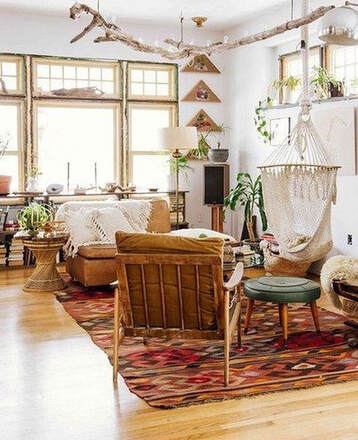 Footstools & Rugs Footstools & Rugs For design consultant Tom Hanson, detecting major seismic shifts in decorative arts trends can be difficult to predict. "They usually come on slowly," says Hanson, "and sometimes end up morphing into one another until there's enough steam to really push one particular style to the top." Hansson says he thinks the Boho style has all the markings of a trend that's likely here to stay. "A few years ago Cottagecore became a thing," says Hanson, "It was very closely associated with the rise of Boho at the time, but quickly became consumed by it." Hanson believes that while Cottagecore embraces many of the ideas of Boho with items such as original antique and vintage pottery, rustic furniture and cast iron decorative pieces, he says it simply wasn't a strong enough trend on its own to sustain itself - despite plugs from celebs like Taylor Swift. In the end says Hanson, it got absorbed by the larger Boho movement, which he feels now dominates the softer side of the decorative arts spectrum. 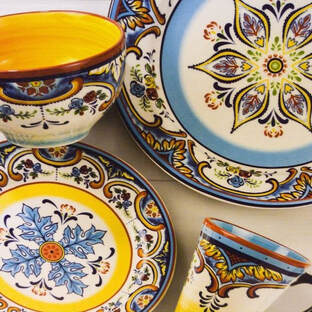 Boho Earthenware Dinner Set Boho Earthenware Dinner Set Hector Ramirez, who co-manages one of southern California's largest antique and vintage malls says it's like déjà vu... all over again. "When the Mid-century craze really started rolling back in the early 2000's, you could still find the odd 50's credenza as a sidewalk-giveaway in some of the older suburban areas around here, but within five years that supply was locked up tight." Ramirez says that the same sort of conditions are now starting to apply to certain Boho pieces. "A year ago I could count on one hand how many of our vendors had patterned foot-stools and ottomans, or big floral print couches," he says, "but today it seems like they're arriving off the delivery trucks on an hourly basis." Despite the recent uptick in popularity, most antique and vintage dealers should still be able to find plenty of opportunities for sourcing out some great Boho-buys at garage and estate sales across the country. And, while it's certainly possible that the left-and-right hand coasts may have already begun to tweak to the Boho movement, it will likely be a considerable amount of time before this type of inventory becomes scarce in any meaningful way. Most dealers are only currently beginning to take notice of the trend, and consumers who are still disposing of such items at Goodwill, thrift stores, and yard sales, are likely to continue doing so until the rising price-point becomes all too obvious (even to those who are not in the know). However, until that time comes, it would appear that the field is now wide open for those willing to put 'bank' on a rising trend. - Senior A.I.A. Staff  NOTE: For readers seeking more information about the Asheford Institute Of Antiques distance-learning program on professional-level appraising, the study of antiques, collectibles, vintage and mid-century modern items, please click here to visit the school's Home Page. Should you have additional questions about the Asheford program, you can also write to the school at: [email protected] or call the Registrar's Office toll-free at: 1-877-444-4508. |
AIA StaffWe're providing our students and reader's with the latest breaking news on events and happenings that we think might be of interest to both collectors and dealers alike. Including changes within the world of antiques, vintage, collectibles and appraising that might just have an effect on your bottom line. We're also interested in hearing from you - so if you've got a great newsworthy story, let us know, and you just might find it here! Archives
July 2024
CategoriesLegal Disclaimer: Extraneous opinions, statements and comments made by individuals represented within these posts do not necessarily reflect those of the Institute. The publication naming of specific business entities, organizations, and concerns, contained herein, in no way represents an endorsement or recommendation of services or products by the Institute. Publicly identifiable information contained herein (including, but not limited to contact information), has been intentionally limited where possible, due to privacy and legal concerns related to the digital dissemination of information through online means. All views expressed herein are those of their respective owners. The Institute is in no way responsible, financially or otherwise, for the accuracy or validity of statements contained within published posts from sources that originate and appear outside of the written and expressed views of those submitted by the Institute.
|
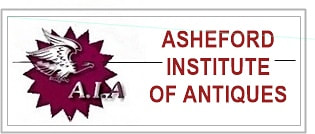

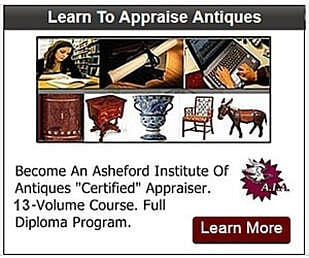
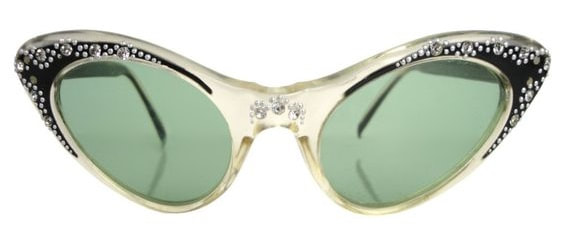
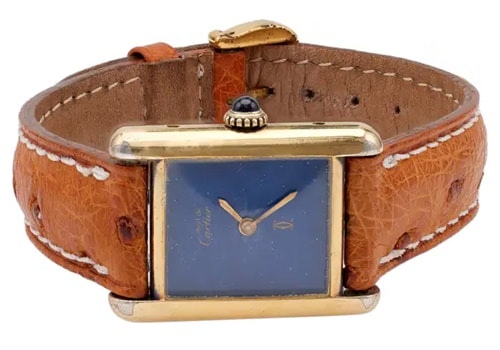
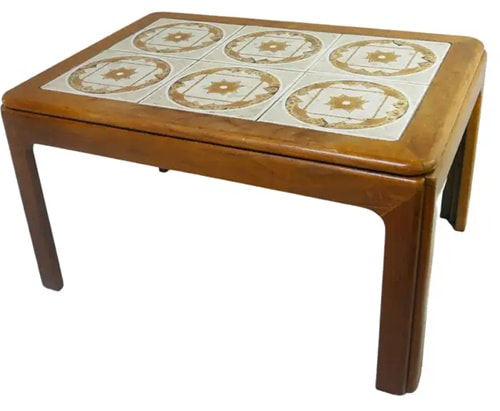
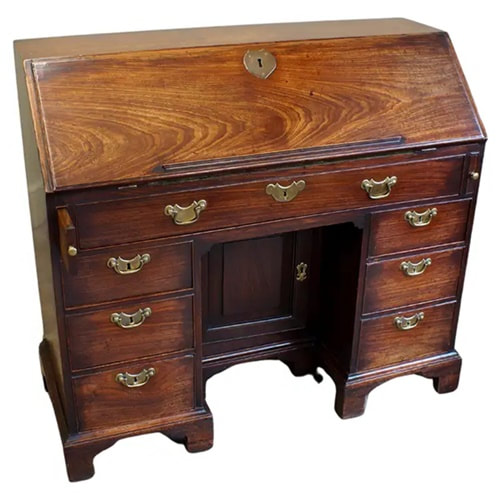
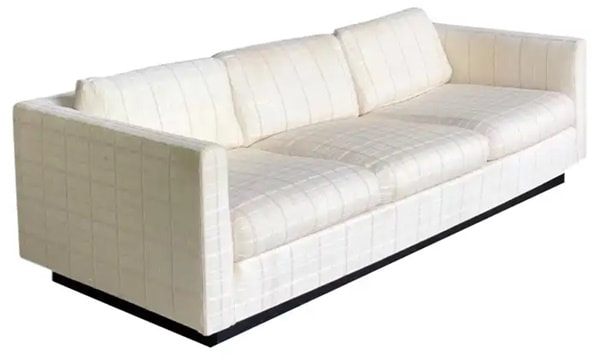

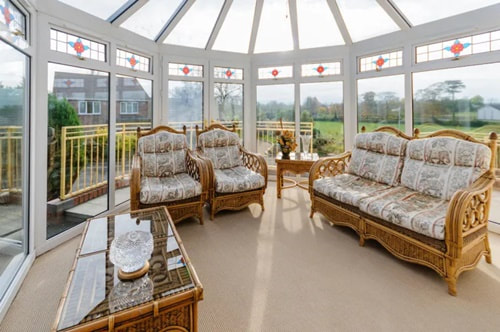
 RSS Feed
RSS Feed
